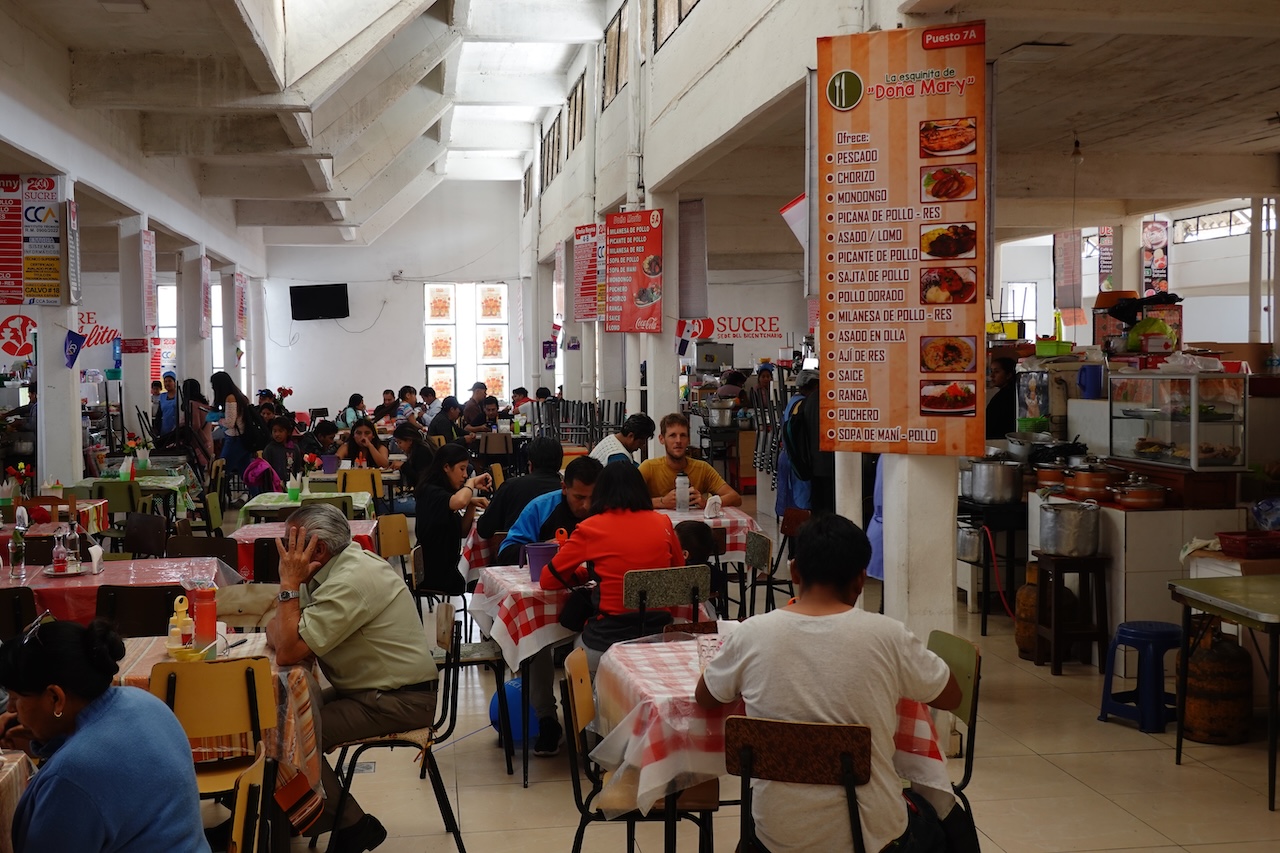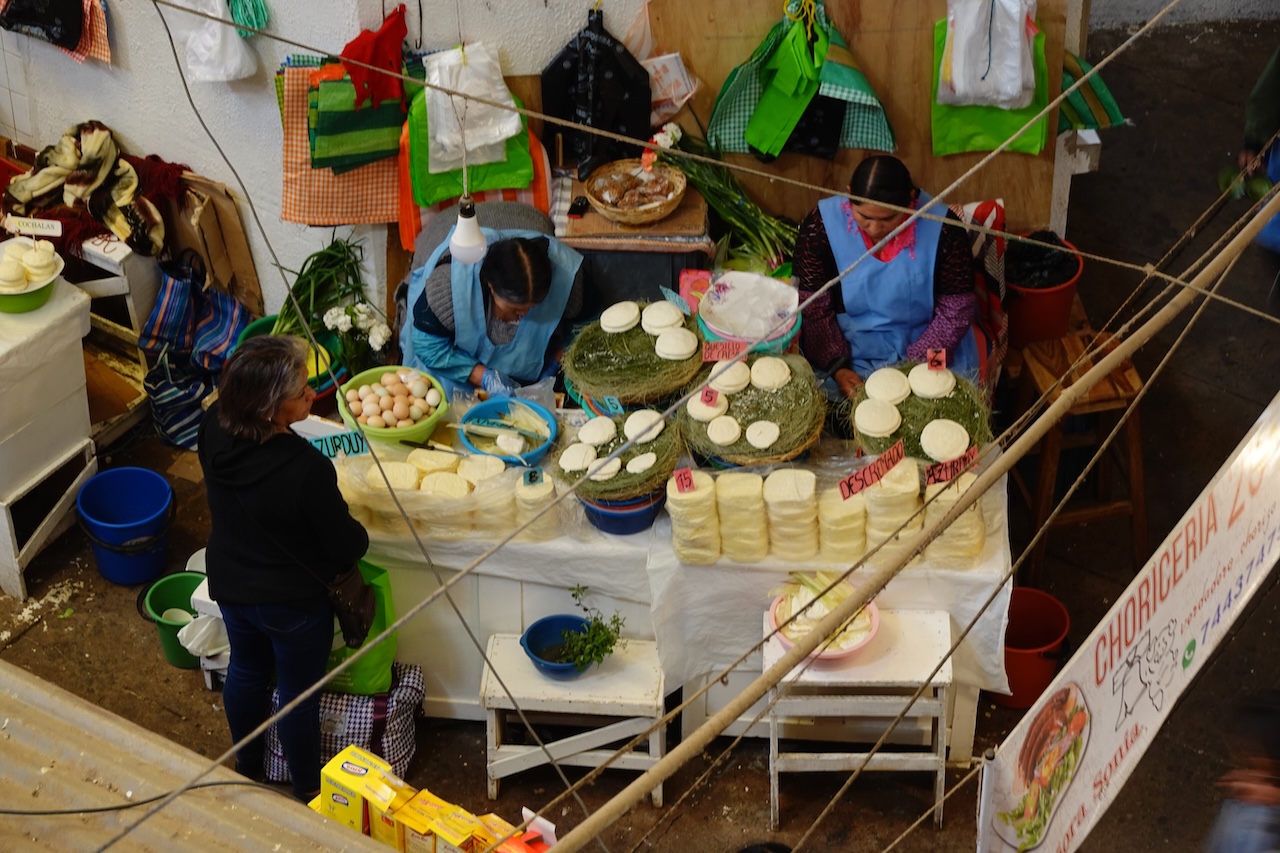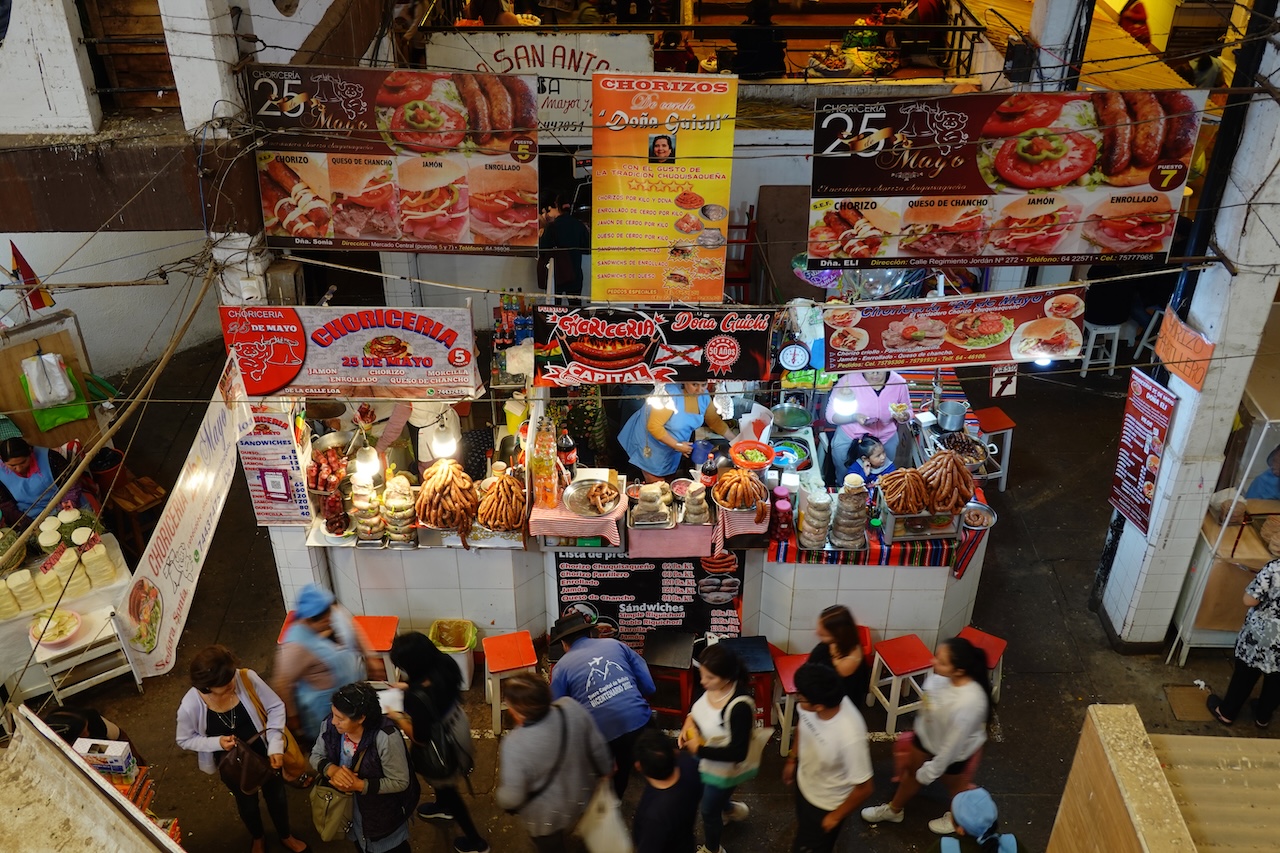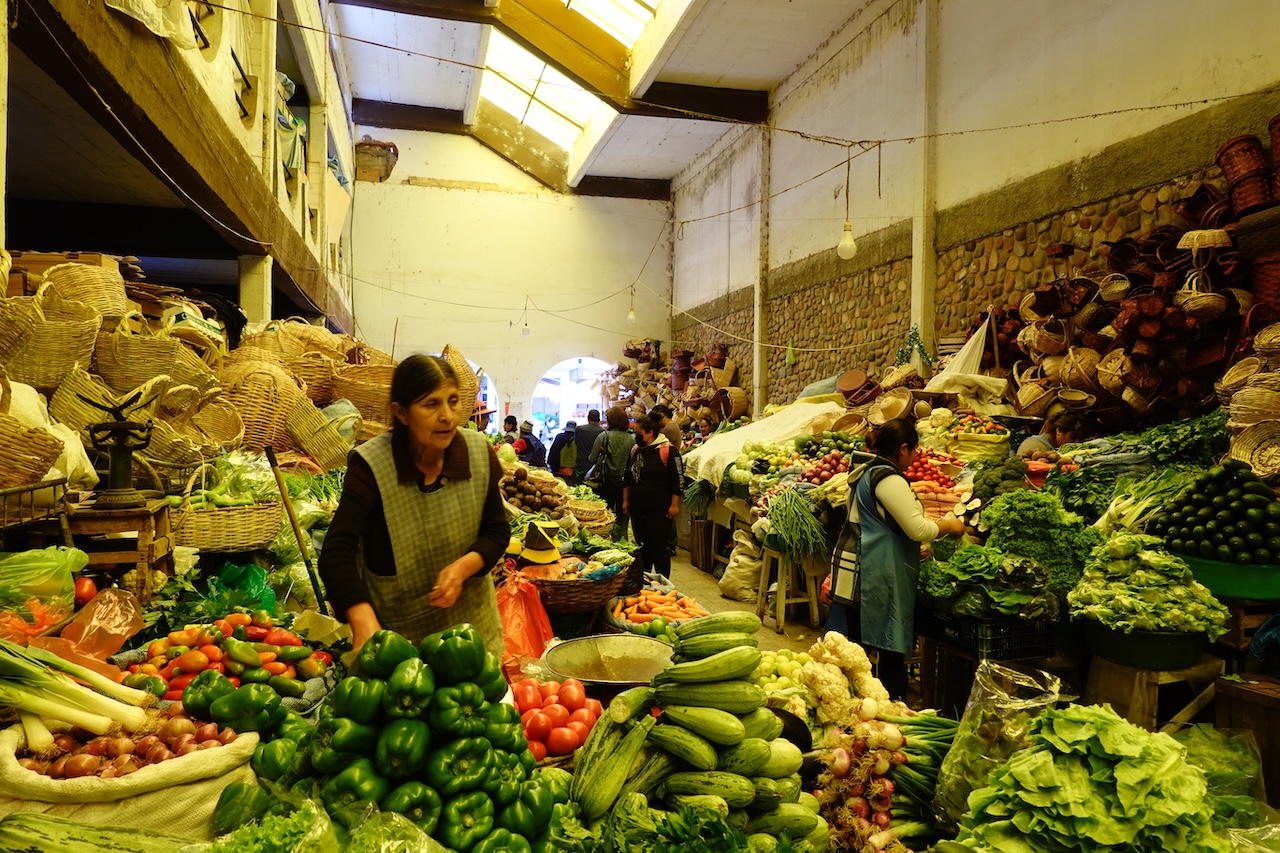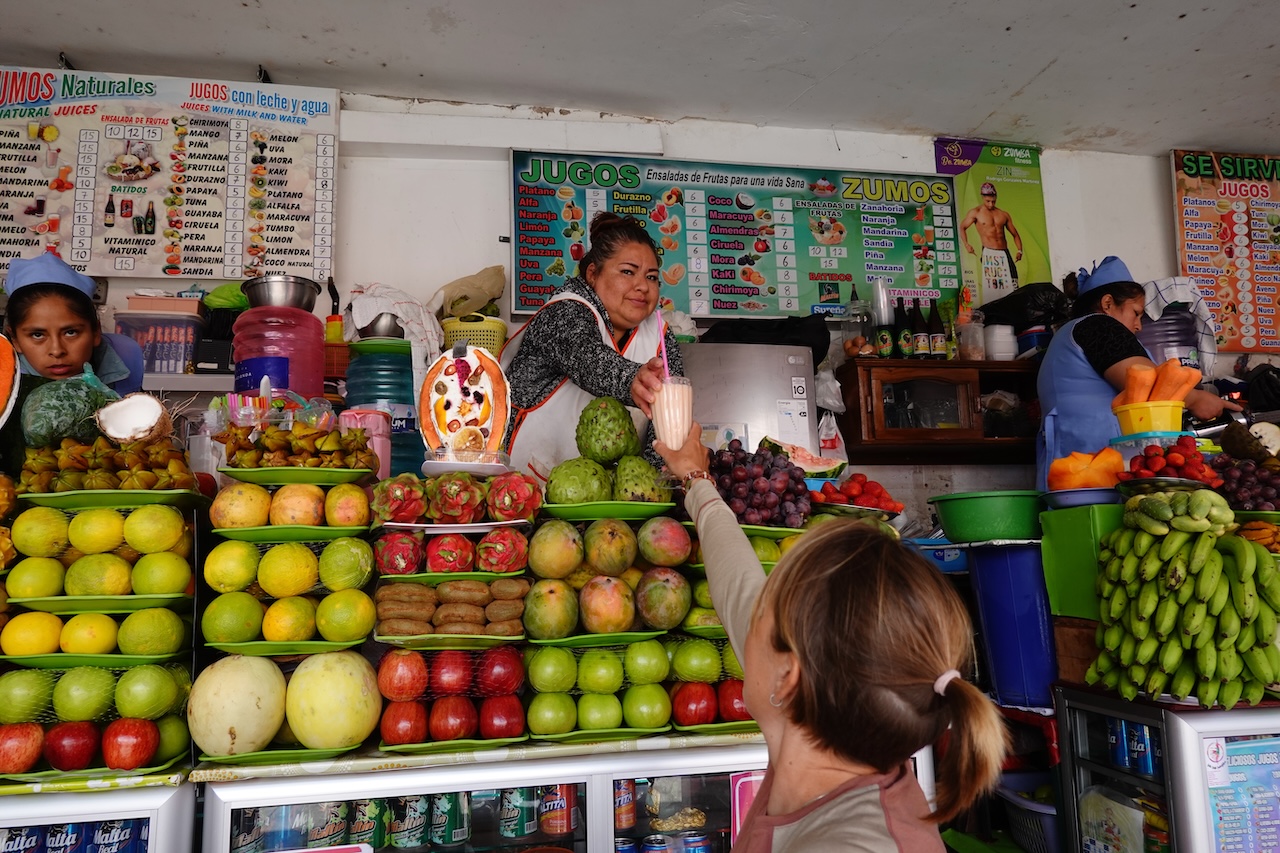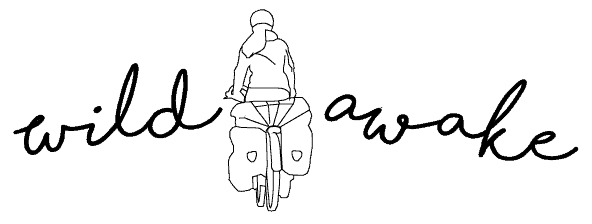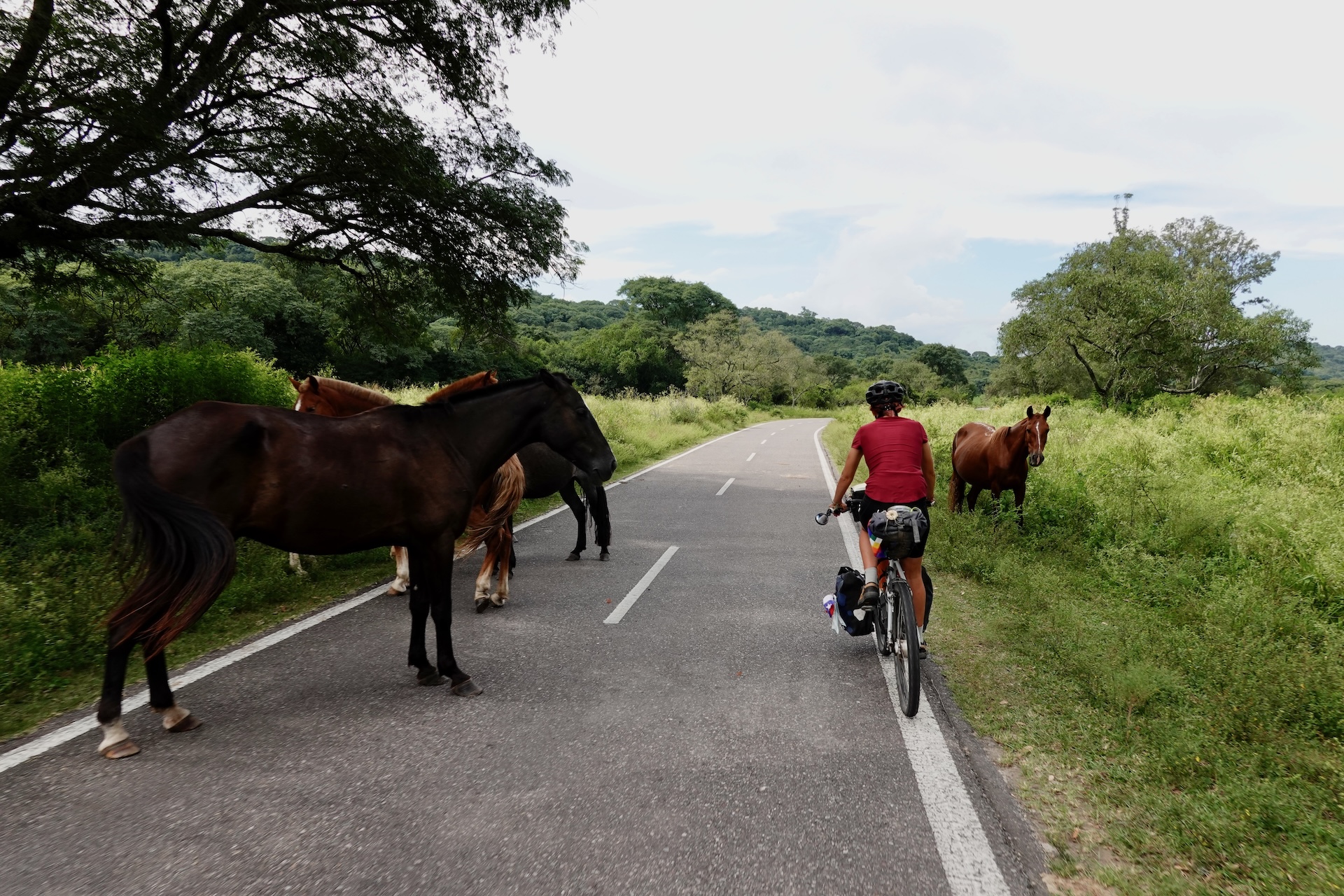
HIGH HEIGHTS AND DARK DEPTHS
S
Lying in a hammock, I look through the photos from the past few weeks. It’s amazing how events from just two weeks ago seem incredibly far away. Every day there are new impressions that push back the previous ones and it just keeps piling up. We organize our memories and sense of time based on ‘milestones’, impressive moments. In ‘ordinary life’ they are generally less well represented than on a trip like this, which means that the perception of time is also different.
At this moment, however, time has temporarily returned to its ‘normal’ speed. That’s because we are at a ‘WorkAway’ address. WorkAway is an online platform where people can create a page if they want to welcome travelers to their home to help with practical work. This often involves jobs such as gardening, caring for animals, maintenance, construction, etc. We found a WA address near the city of Sucre, in the village of Yotala. It is with a lady who has a piece of land with an open-air restaurant, two ‘cabins’ (for WorkAwayers), a workshop where two employees paint terracotta tiles and a large house where she and her cousin live.
Paul is currently closing cracks in the plasterwork of the ceiling. Two young German backpackers are trimming plants with machetes. I lie in the hammock waiting for the lady of the house to return with new paint so that I can continue renovating the wooden benches and tables. So I’m working this afternoon instead of this morning.
We are not here because we didn’t feel like cycling anymore. No way! A WorkAway was on our wish list, but we would have preferred to find a place where we could learn to build with wood or adobe, create something instead of doing overdue maintenance. We wanted to learn skills that could come in handy when we build our own house. But in recent weeks the pain in my knee suddenly increased again. This after he had been almost completely absent for a month or two. Even during the climb over the high Agua Negra pass I didn’t feel any pain! In recent weeks, however, we have been forced to alternate cycling with a few lift and bus rides. Just while we were really looking forward to exploring Bolivia, and then Peru, by bike! That’s why we decided to take a break. Get off the bike for a while, give your knee a rest and then get back on the road with fresh courage or a revised plan.

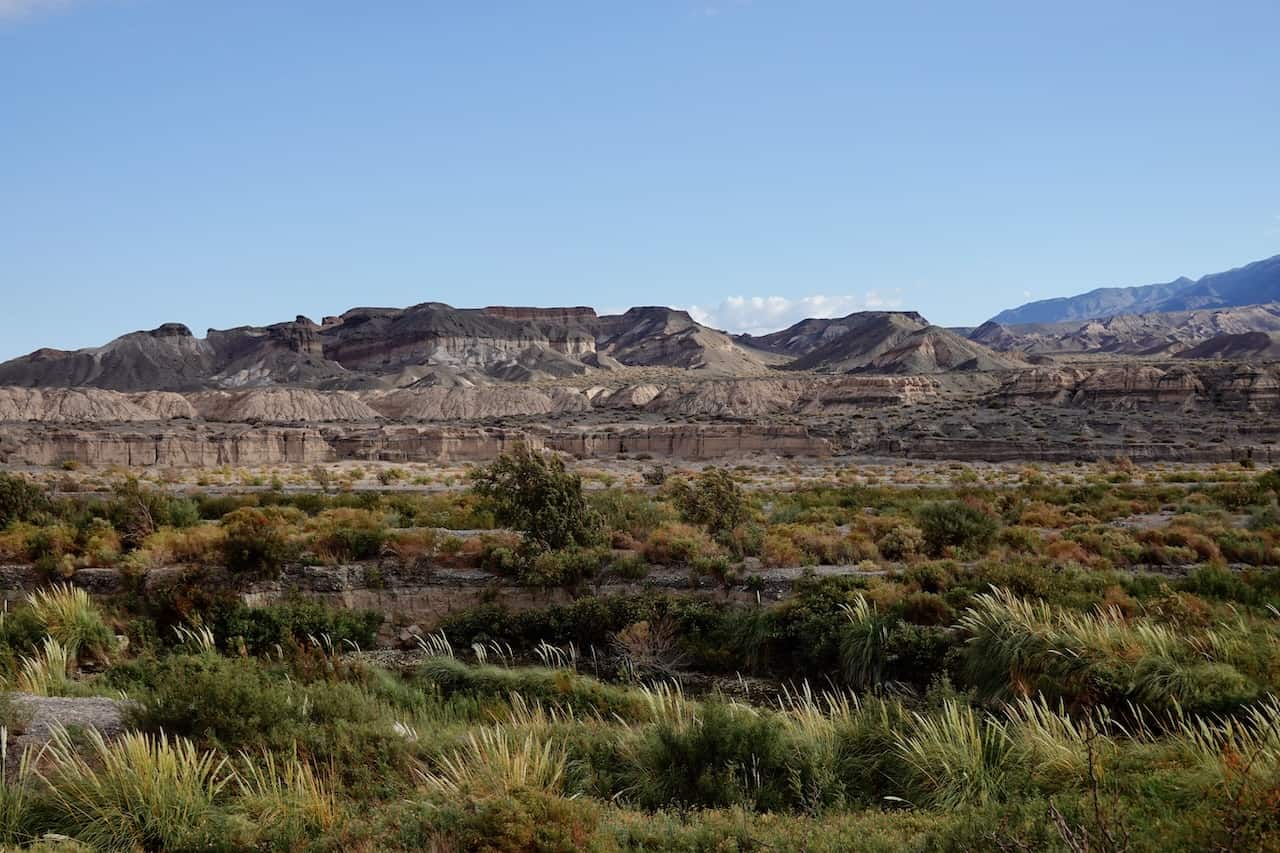
It seems like such a minor problem, a painful knee, when I put it in perspective to other health issues. But it feels so big. This injury(?) has now been going on for five years and in all that time the various physiotherapists and doctors have often offered me hope but, as it turns out, never a solution. But then again, you can do thousands of things with a bad knee. And fortunately I also have the talent not to give up and to fully enjoy all the big and small wonderful things that I do, see and experience. Still, it gets to be too much for me sometimes. The fear of the obstacles on cycling grounds and therefore in the way I prefer to live. If you are a cyclist yourself, you may understand this all too well. It is not just my ‘sport’, not just a ‘means of transport’ or ‘outlet’. It is my great love and my way to shape and experience my freedom.
Every now and then, if my knee really hurts or keeps nagging, I curl up, preferably under the blanket, and then I am very quiet, out and inside. When Paul came to sit with me this week, I told him ‘I am very sad inside. It hurts so much in my heart.’ I am not really preoccupied with how this injury can hinder me in other areas. But my bicycle feels like part of my body and life and sometimes I feel the threat that that part will be amputated. My bike, my freedom and my great love.
I had to write about this in the first place, because I didn’t feel like reporting on the past few weeks without first getting rid of this big bad elephant here next to my hammock.
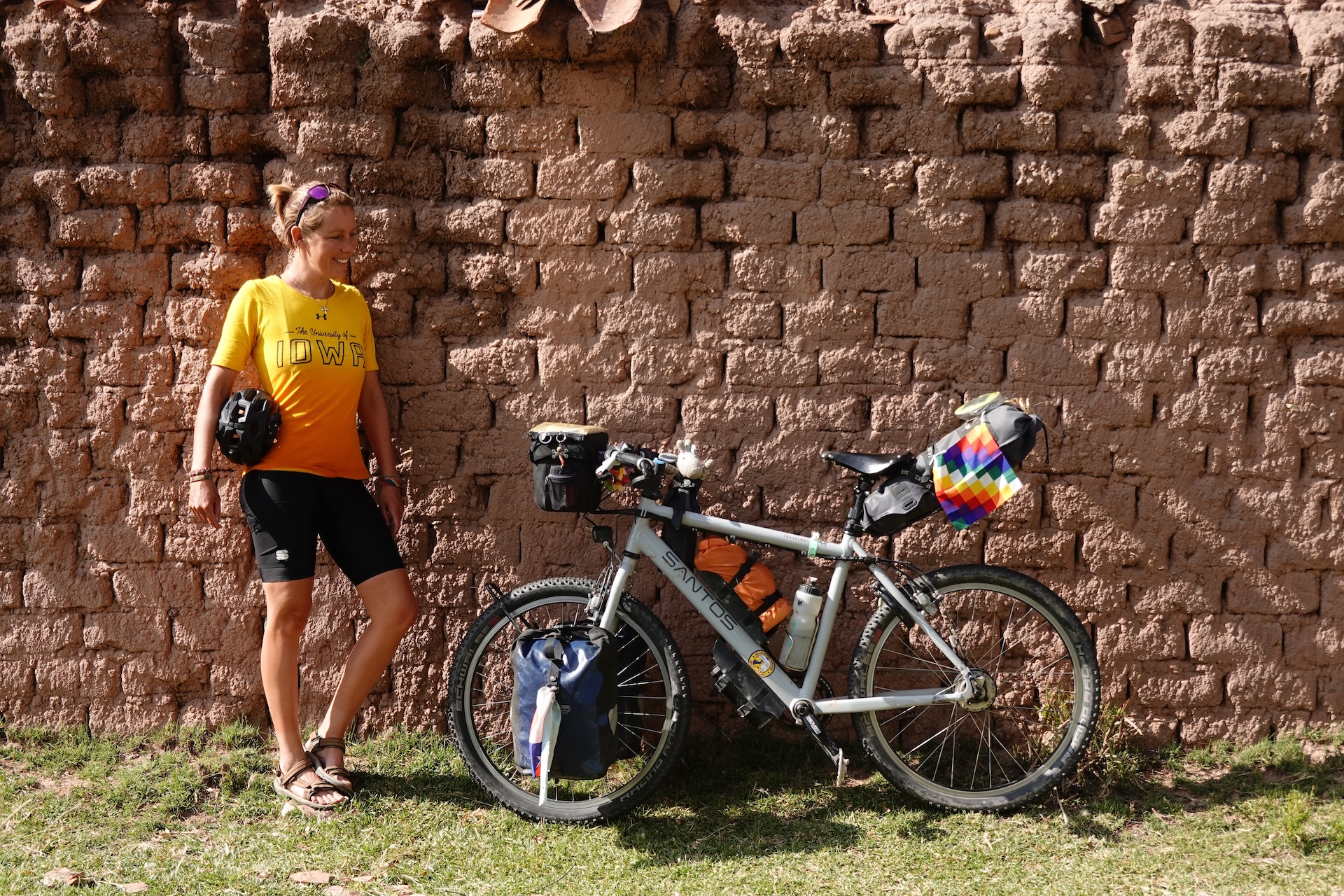
Now I would like to take you back to Salta, where I ended the previous blog, already 3.5 weeks ago. There is a beautiful road through the greenery between Salta and the city of San Salvador de Jujuy. Narrow, sometimes only four meters wide and it twists like a snake. That is why almost all traffic takes the detour via a wide motorway. We gradually climb through the beautiful greenery along this ‘cycle path’ and a little later we zoom down through the winding bends. There are only a few houses on this road, including a small farm with muddy pigs roaming around outside.
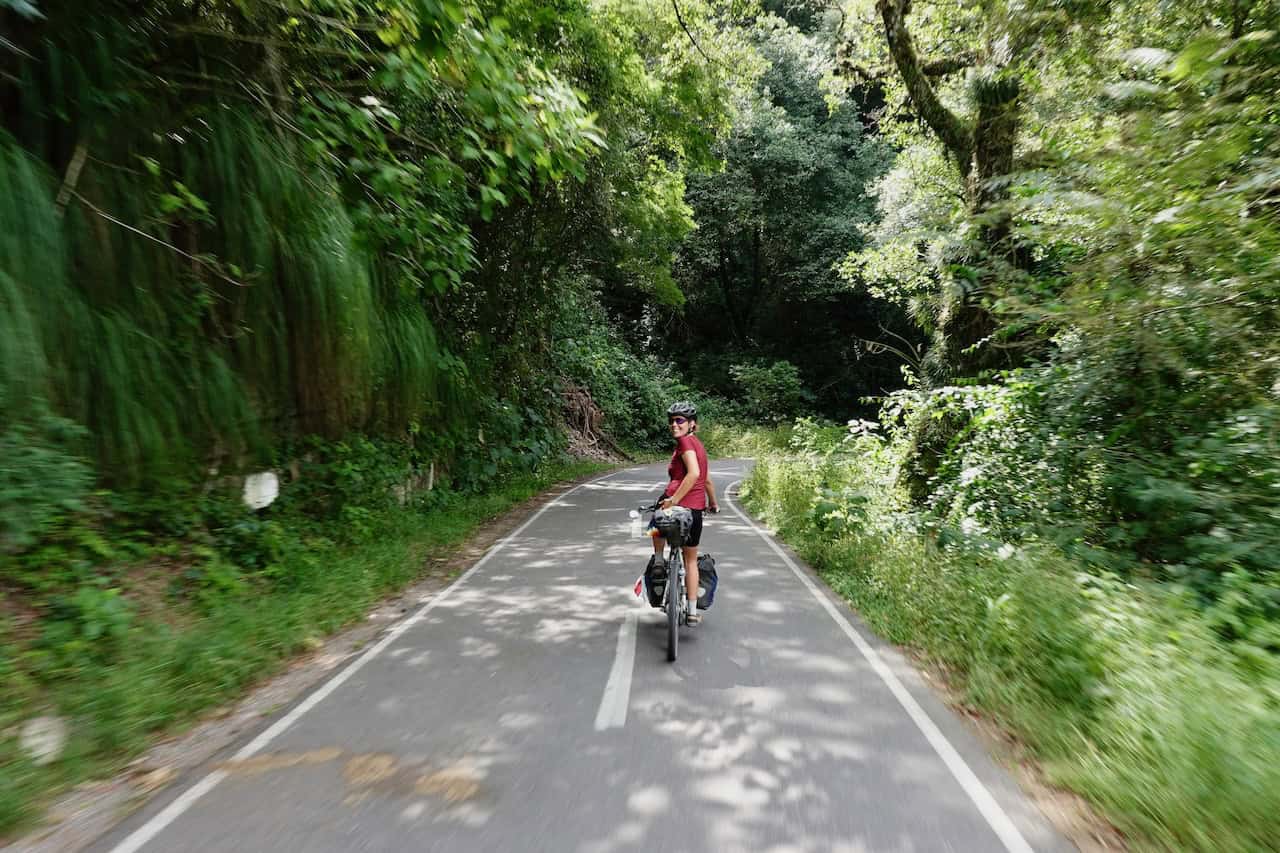
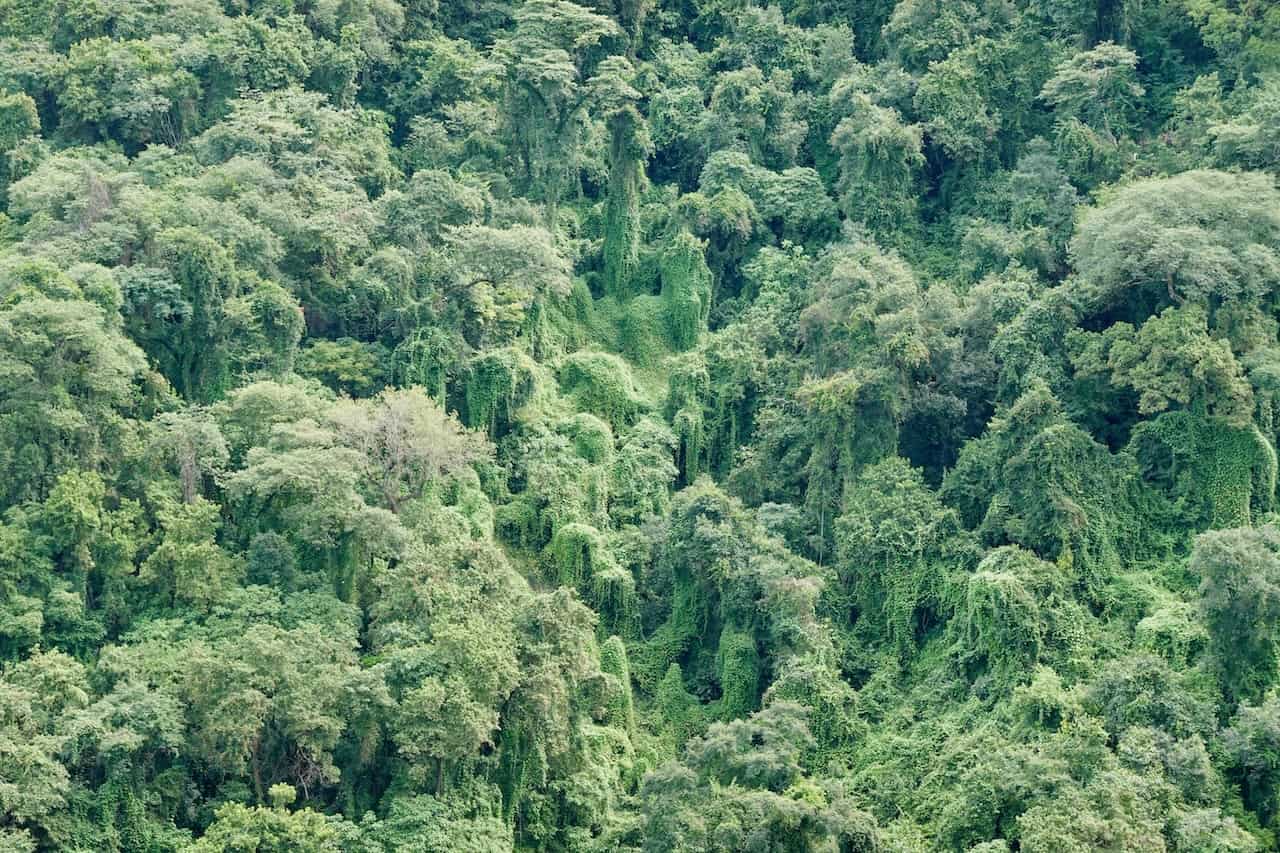
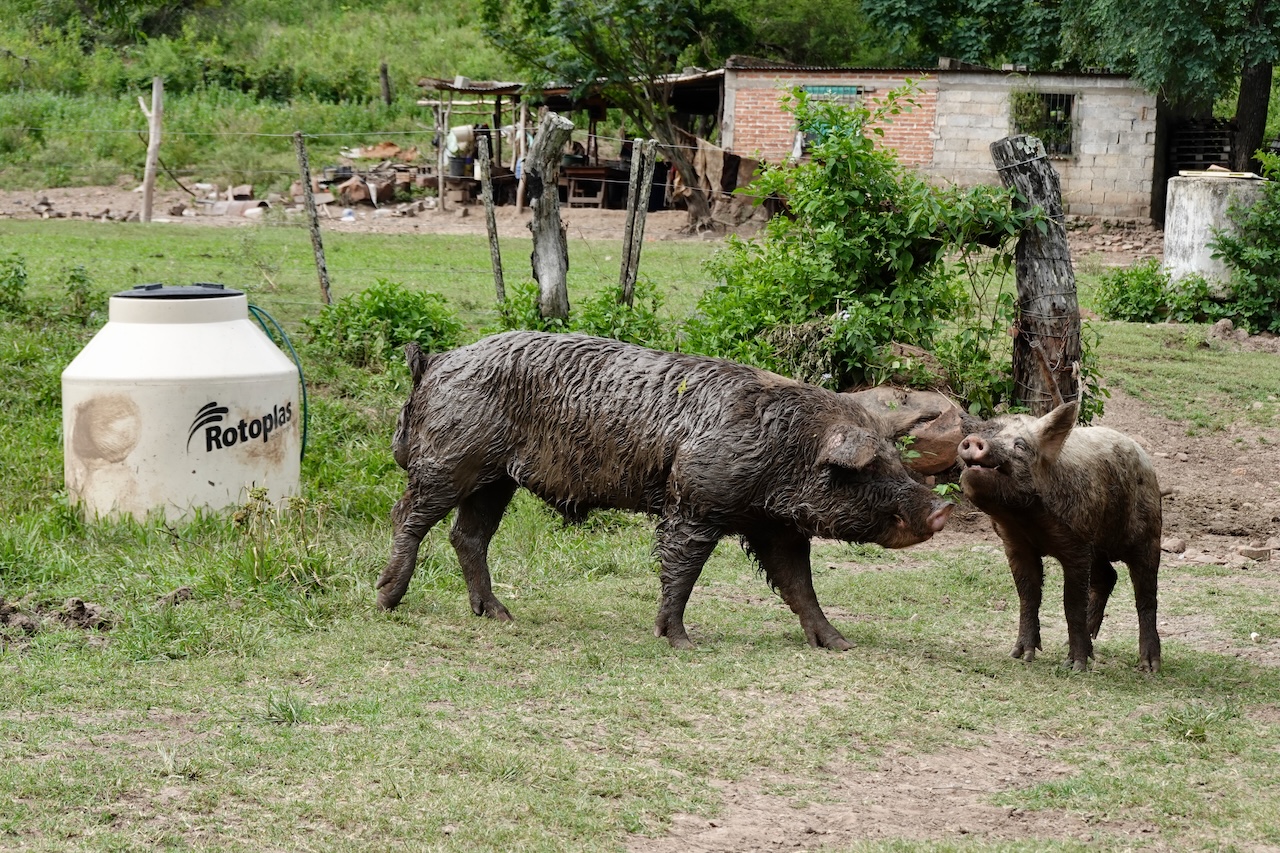
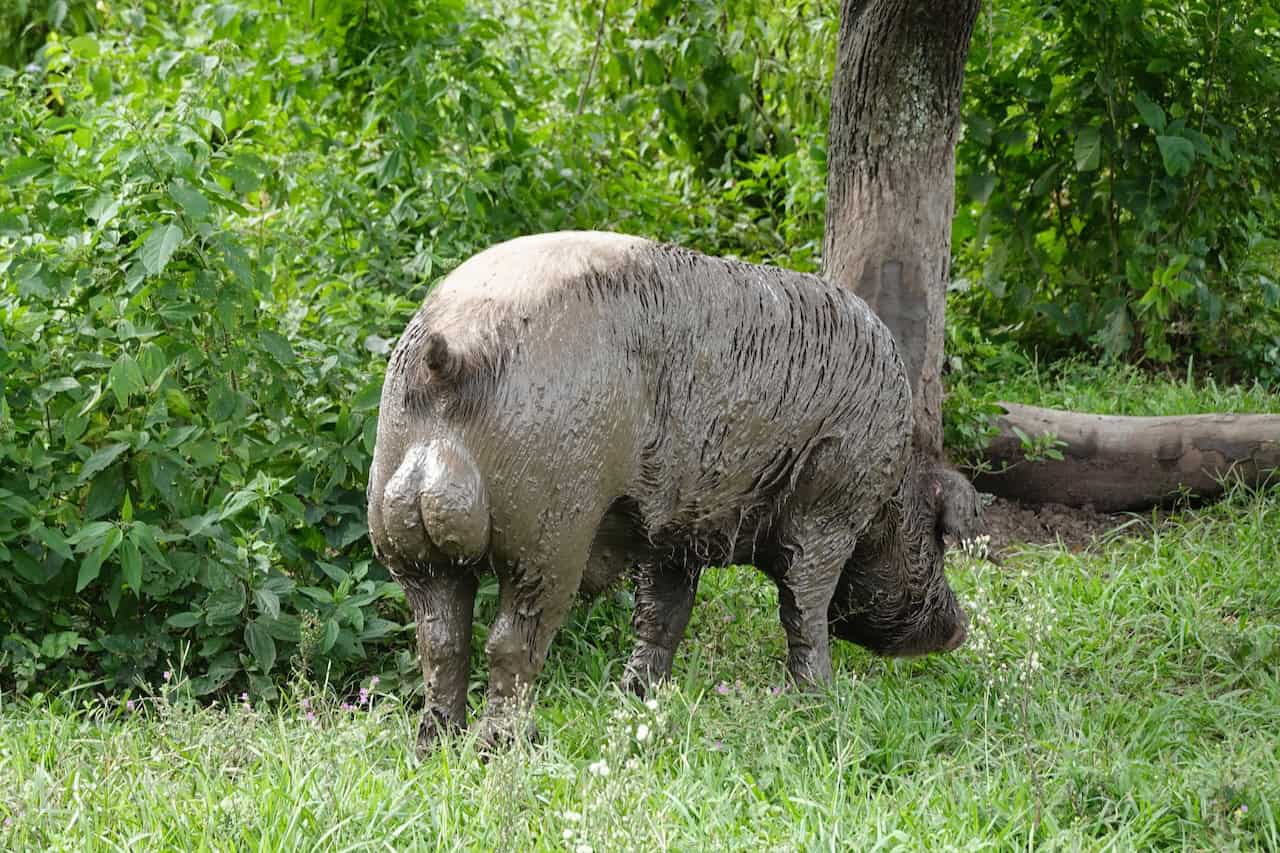
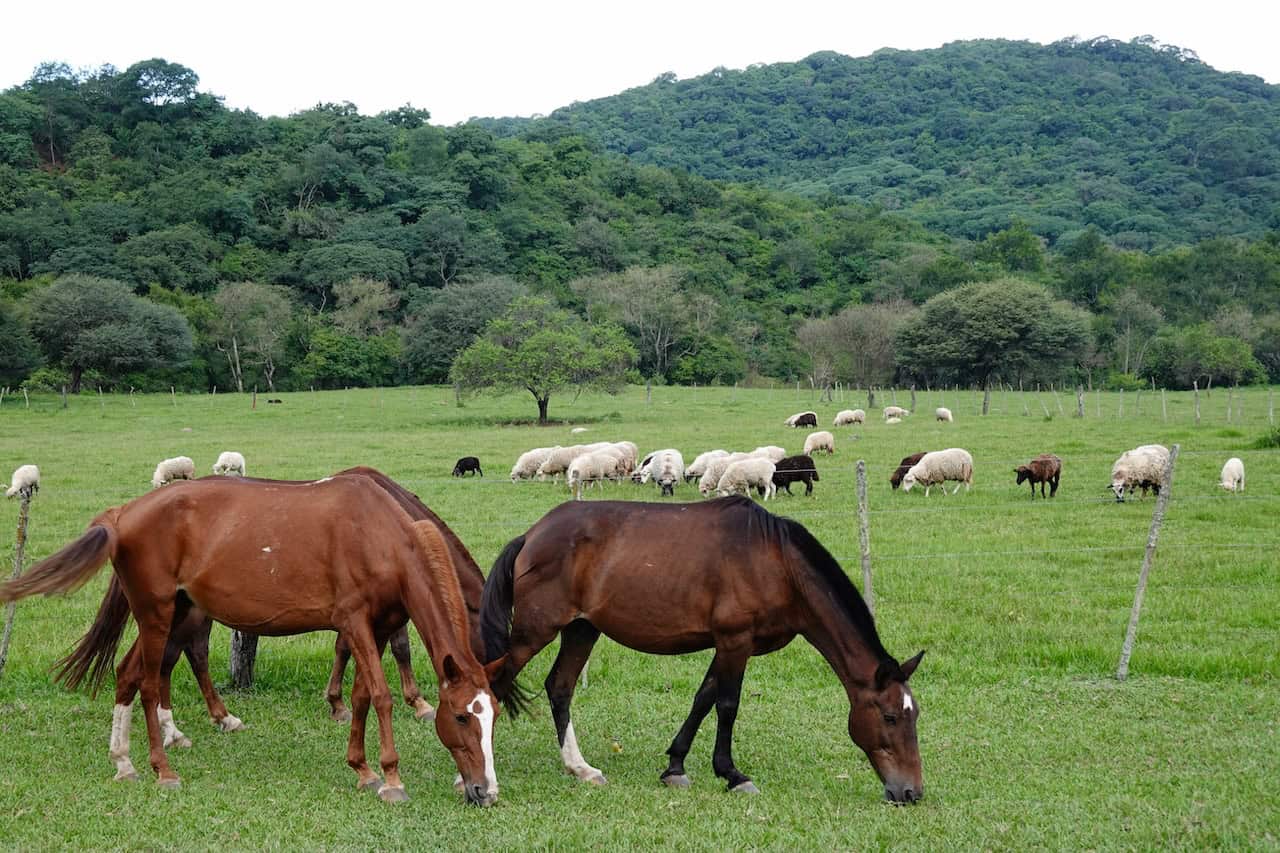
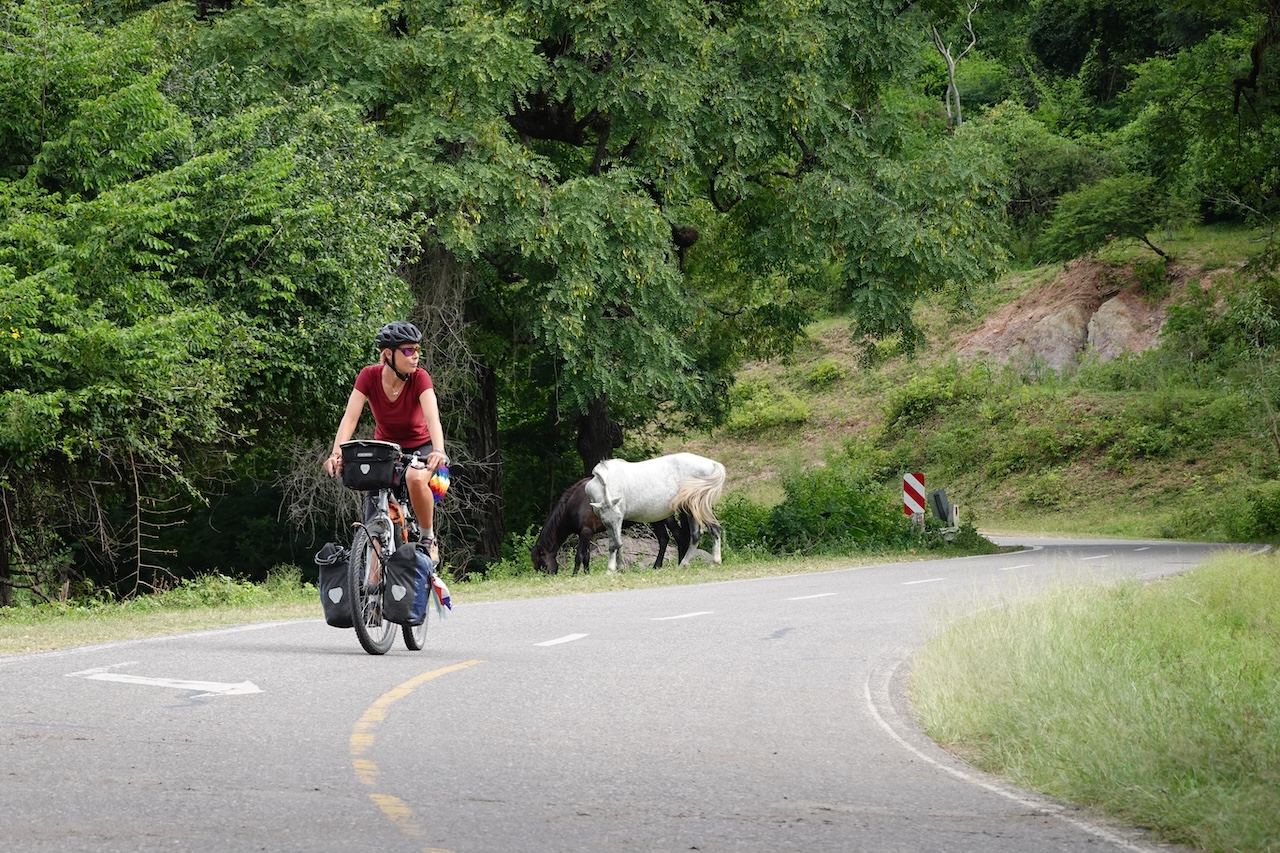
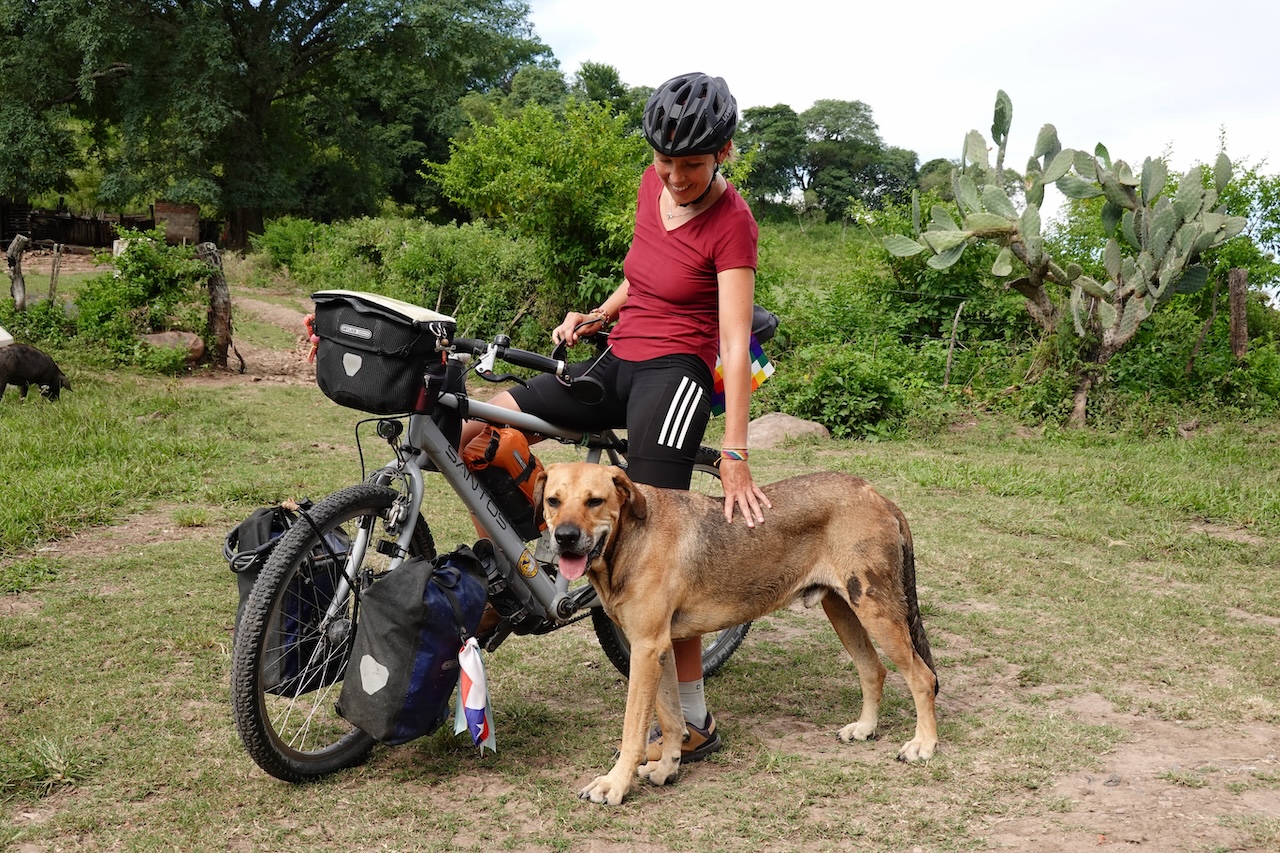
After a few days on the road, a previous WarmShowers hostess tipped us off to a certain Lalo to spend the night with. It turns out to be a small older man who has transformed a piece of land into a paradise. He prefers to receive travelers every day to share his ‘wealth’. Because the guesthouse is occupied, he sweeps a ‘carport’ clean for us where we can pitch our tent. And that’s fortunate, because at night the rain falls in torrents from the sky. Because of our enthusiasm about his little paradise, called Eureka, he invites us to come and see his house. A two-story round tower built of adobe (a mixture of sand, straw, clay and water) with his own hands. It’s like a gnome’s house, especially if you put Paul in it. We poke around, ask questions, and take pictures and mental notes of the things that inspire us. It is not the first house where we get ideas for what we do and do not want in our own ‘future house’.

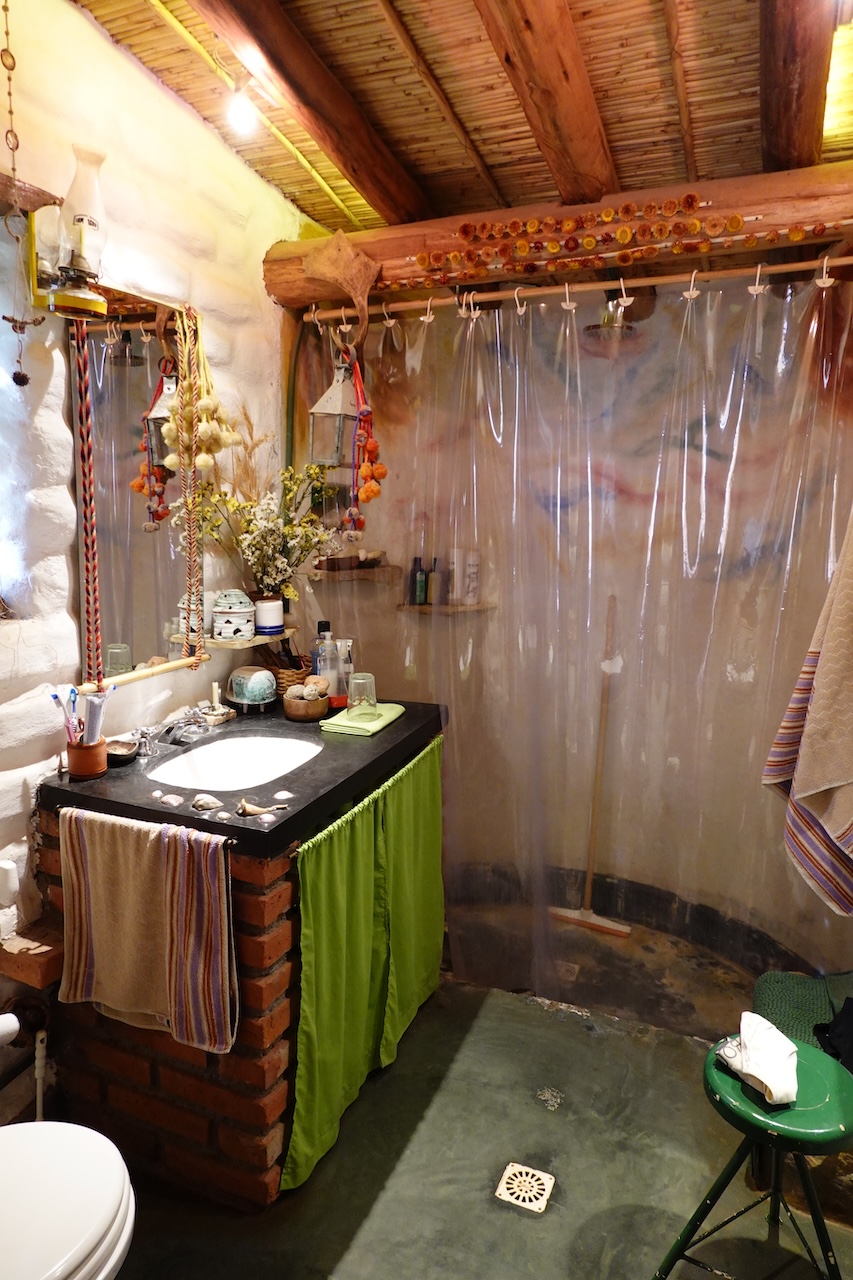

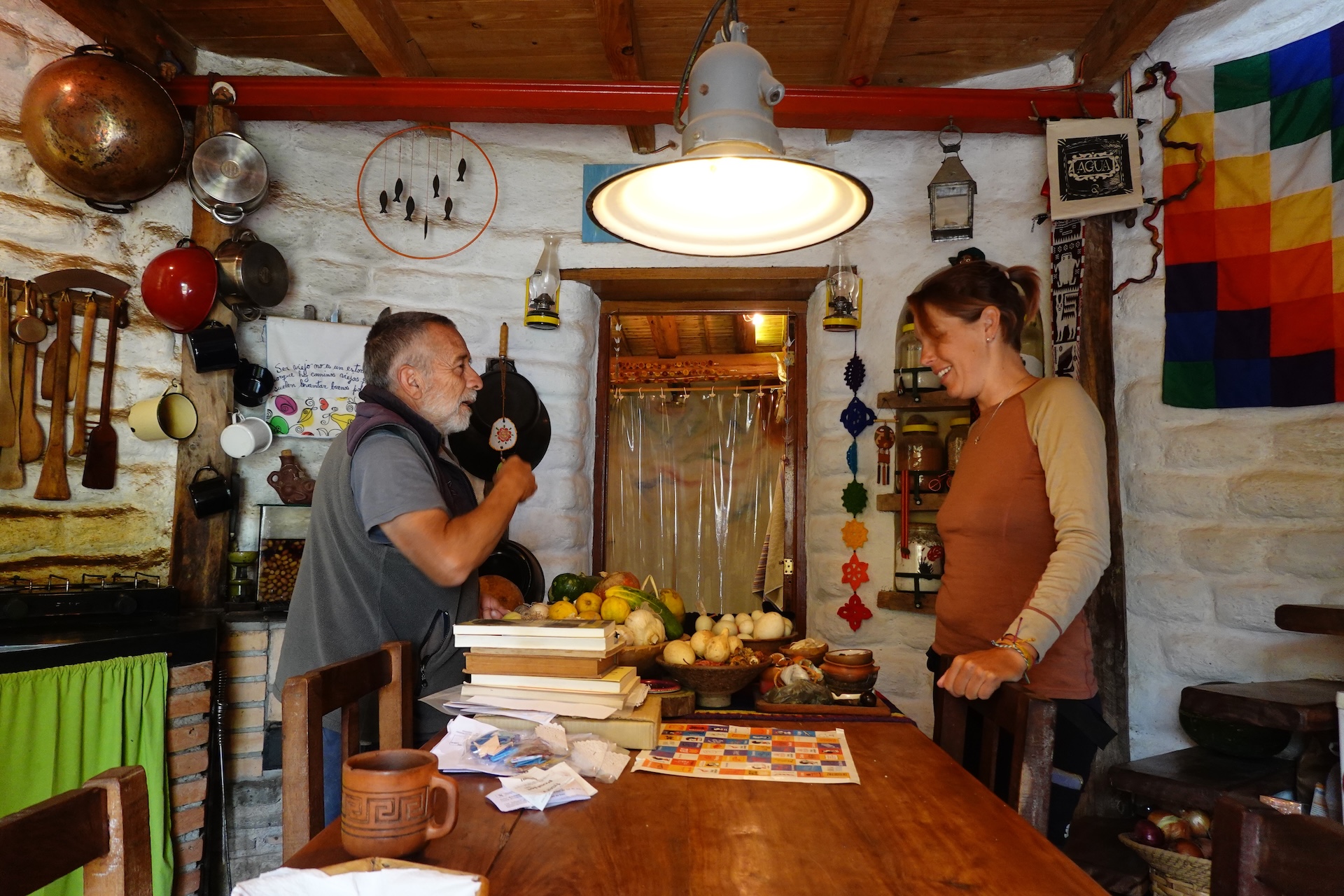
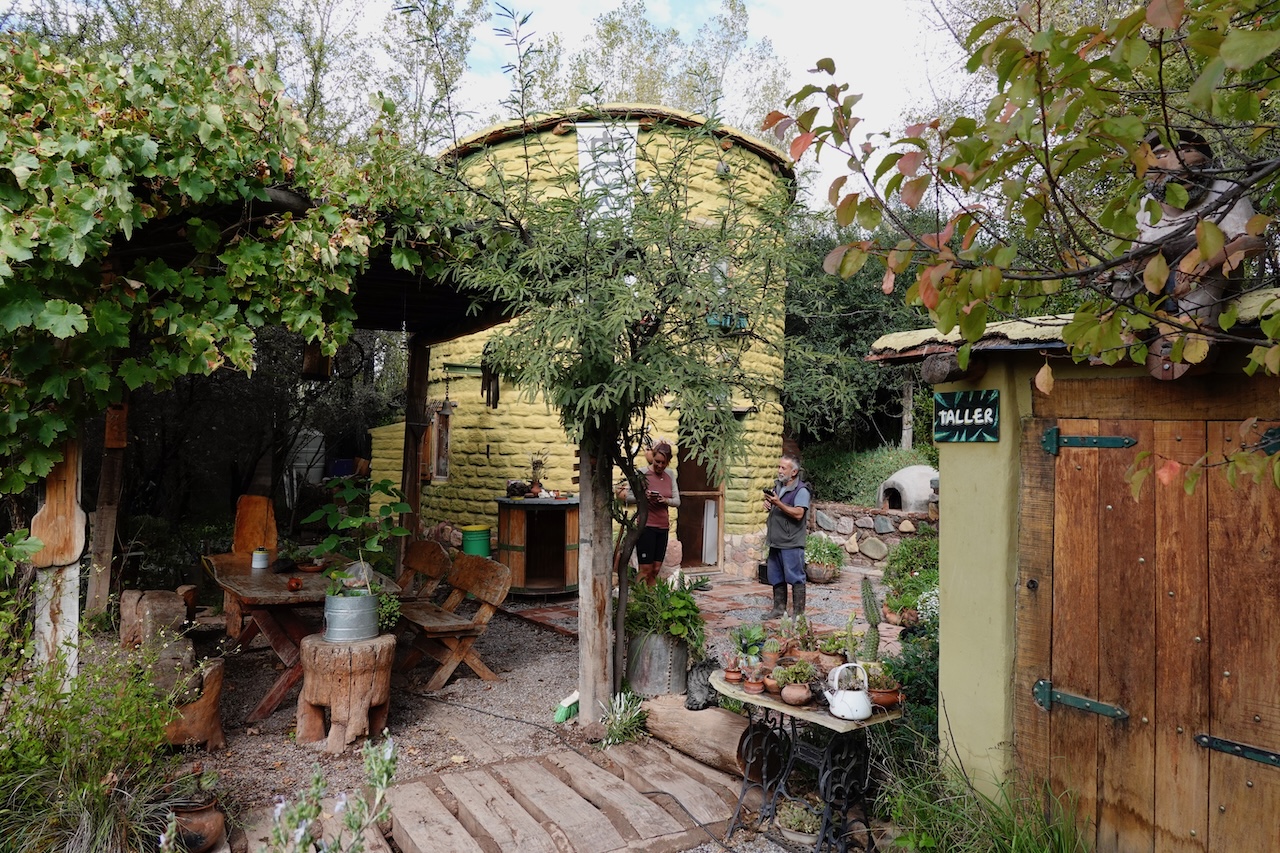
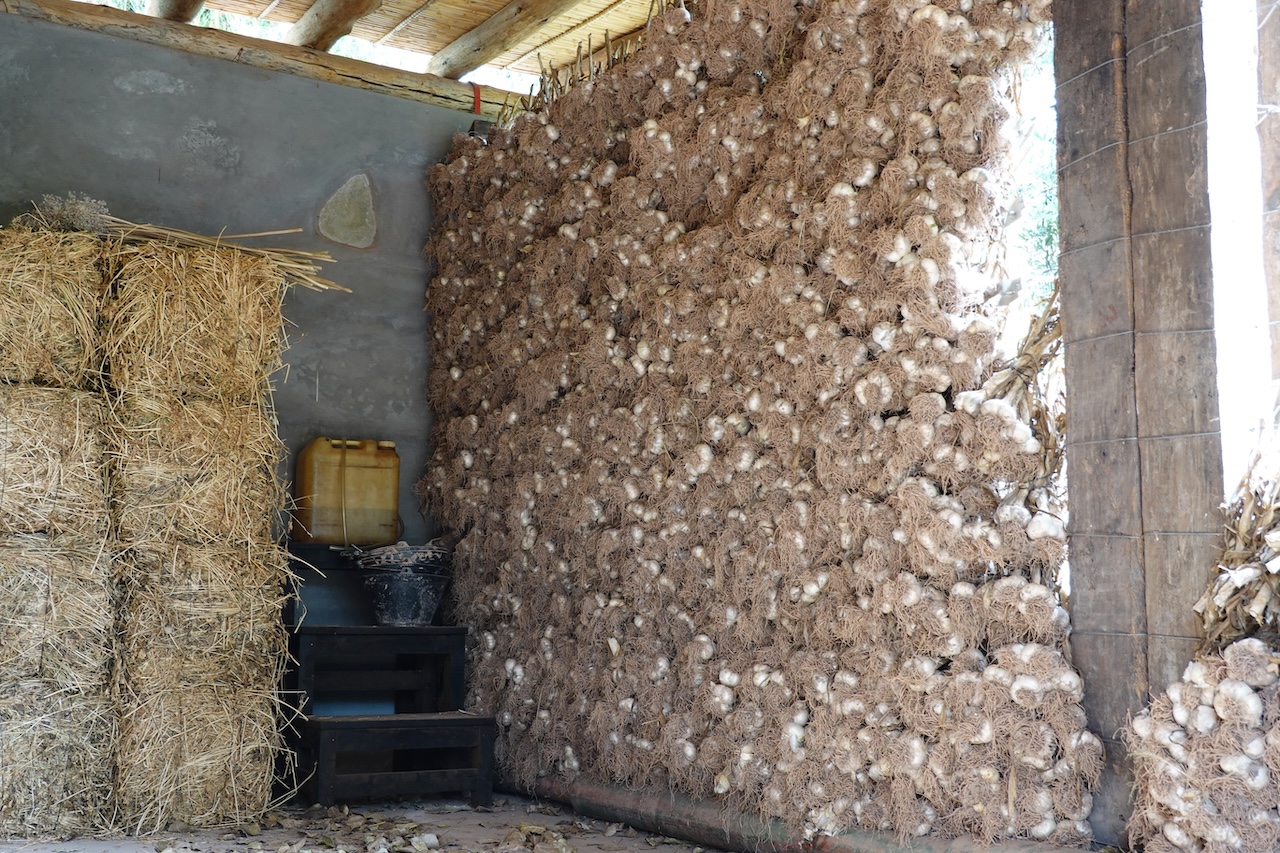
When we get on after the tour, we immediately meet a cycling French couple who have the same ‘day goal’ as us; the village of Humahuaca, to see the 14-colored mountains there. Before we get there it is already almost three o’clock. Paul and I quickly find a ‘campsite at home’ with a friendly lady and then hitchhike to the tourist hotspot. We climb the 20 kilometers and 1000 meters of altitude in the back of a pickup truck. With bruised buttocks we step out with relief when we ‘finally’ reach the top. We hoped for a beautiful afternoon sun on the mountains and were lucky that we caught some of it before the sun disappeared behind the dark clouds. Where do they suddenly come from?
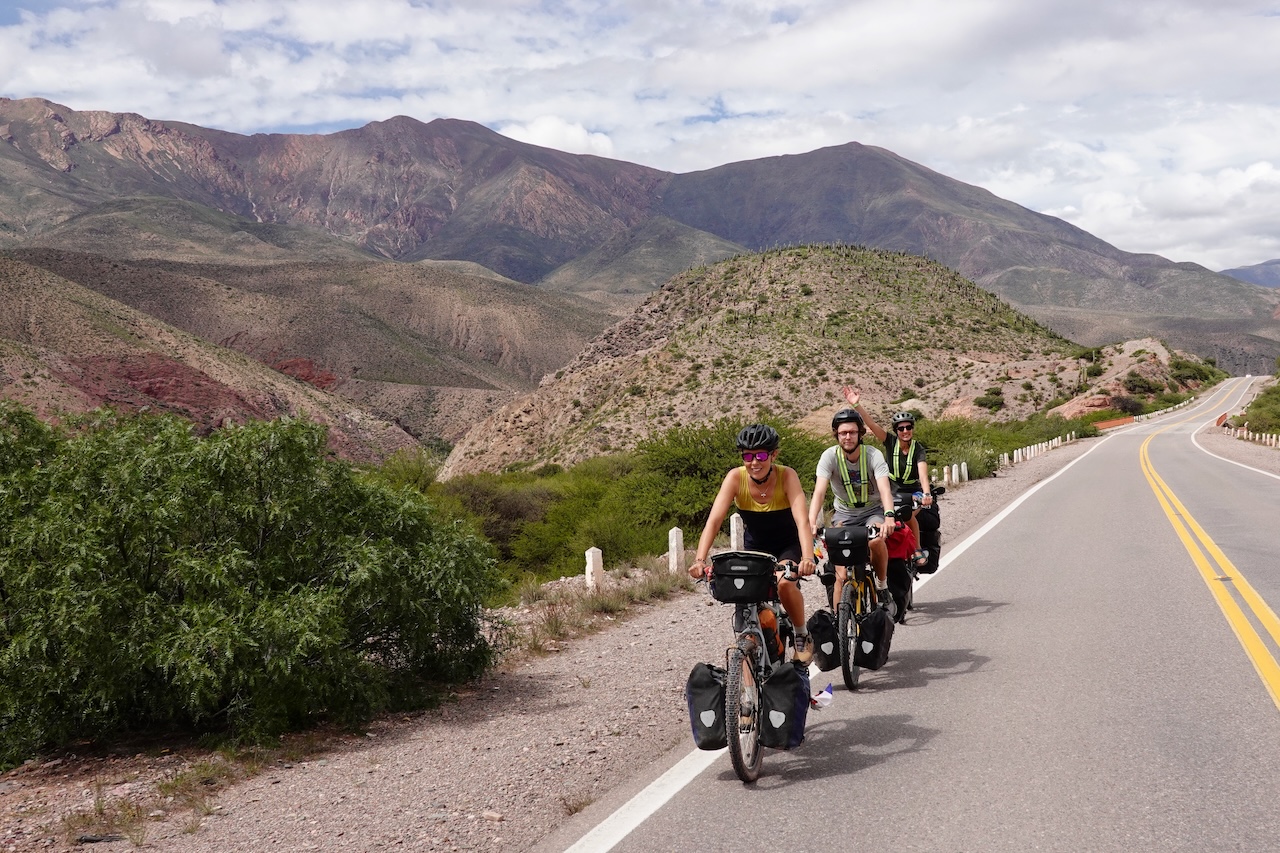

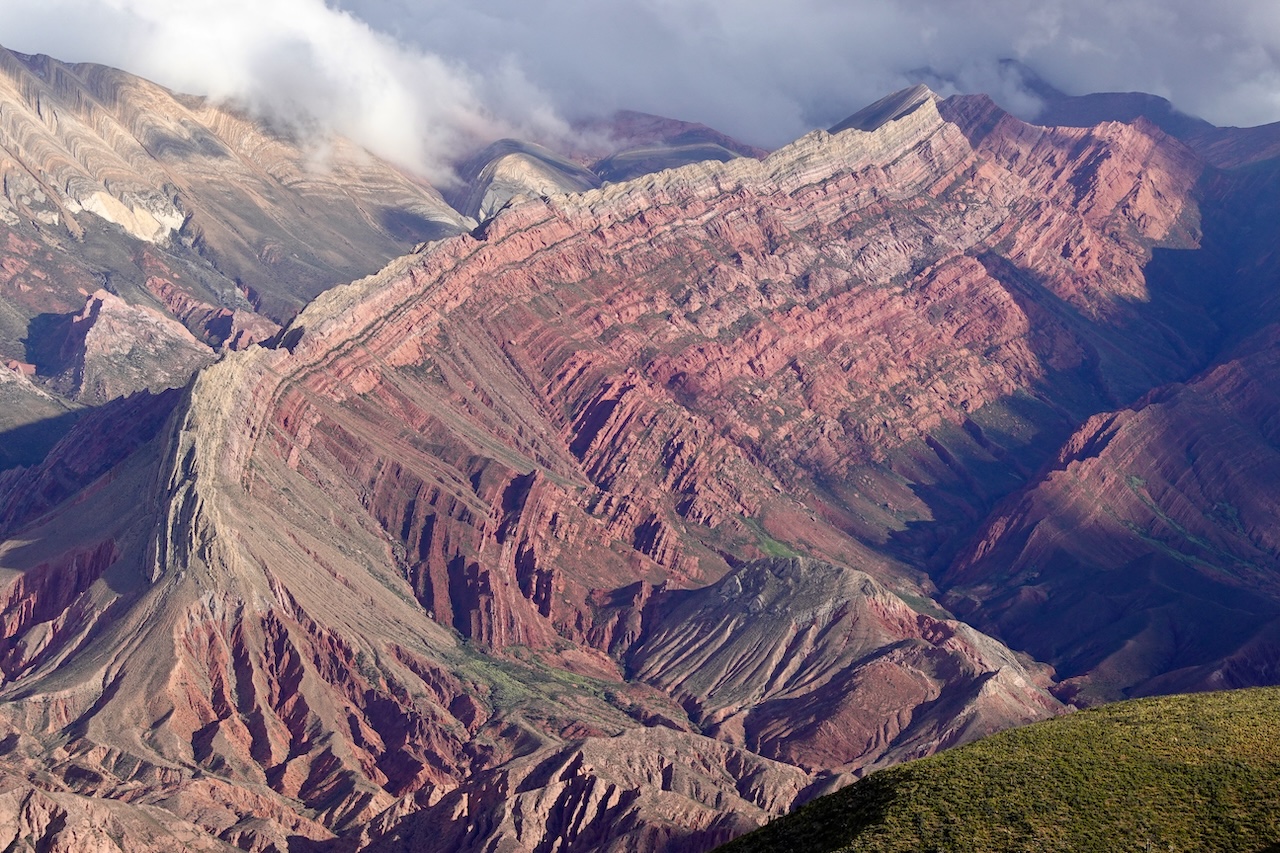


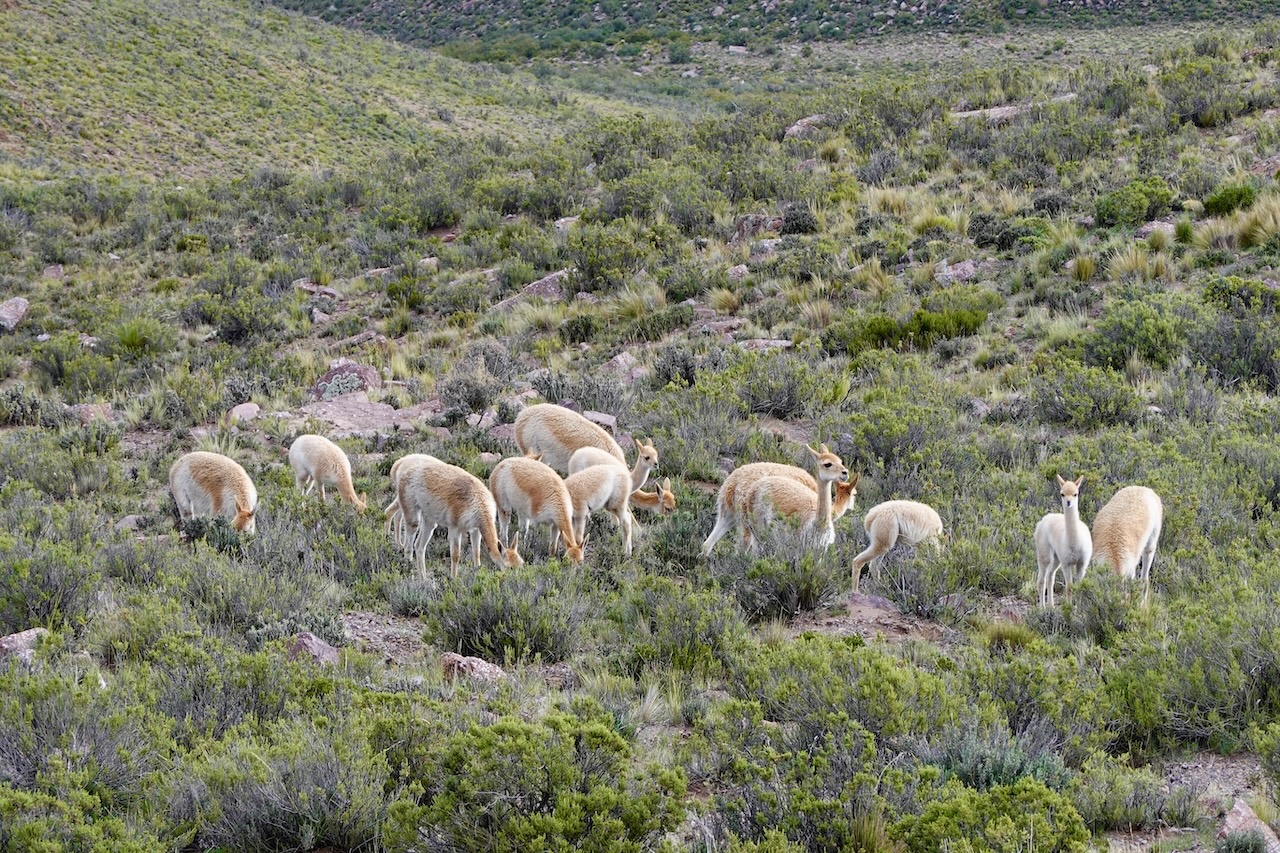
Back down in the village, the old narrow streets of the center are bustling with activity. Occasional(?) drum and pan flute bands and marching bands play short tunes on repeat after repeat as they march through the streets. They walk a route along the 14 images of Jesus’ passion to the central square in front of the church. It is the day before Easter. It is certainly not a pleasure for the ears and when the first thick drops fall from the sky, Paul and I decide to go to our overnight stay. When we arrive, the lady of the house is covering our bikes with a piece of plastic and has hung up our cycling clothes in the garage. For time reasons, I had only set up the tent earlier this afternoon but not yet furnished it. While we are taking our mats, sleeping bags and more out of the bags, the rain starts in full force. Our hostess comes to offer us thick blankets under an umbrella and possibly a plastic sheet for the tent. However, our sleeping bags and tent are fine. Except for the groundsheet! Soon everything on the ground in the tent is soaked, with the result that the next morning we put out all our belongings in the garden until the morning sun has dried them.
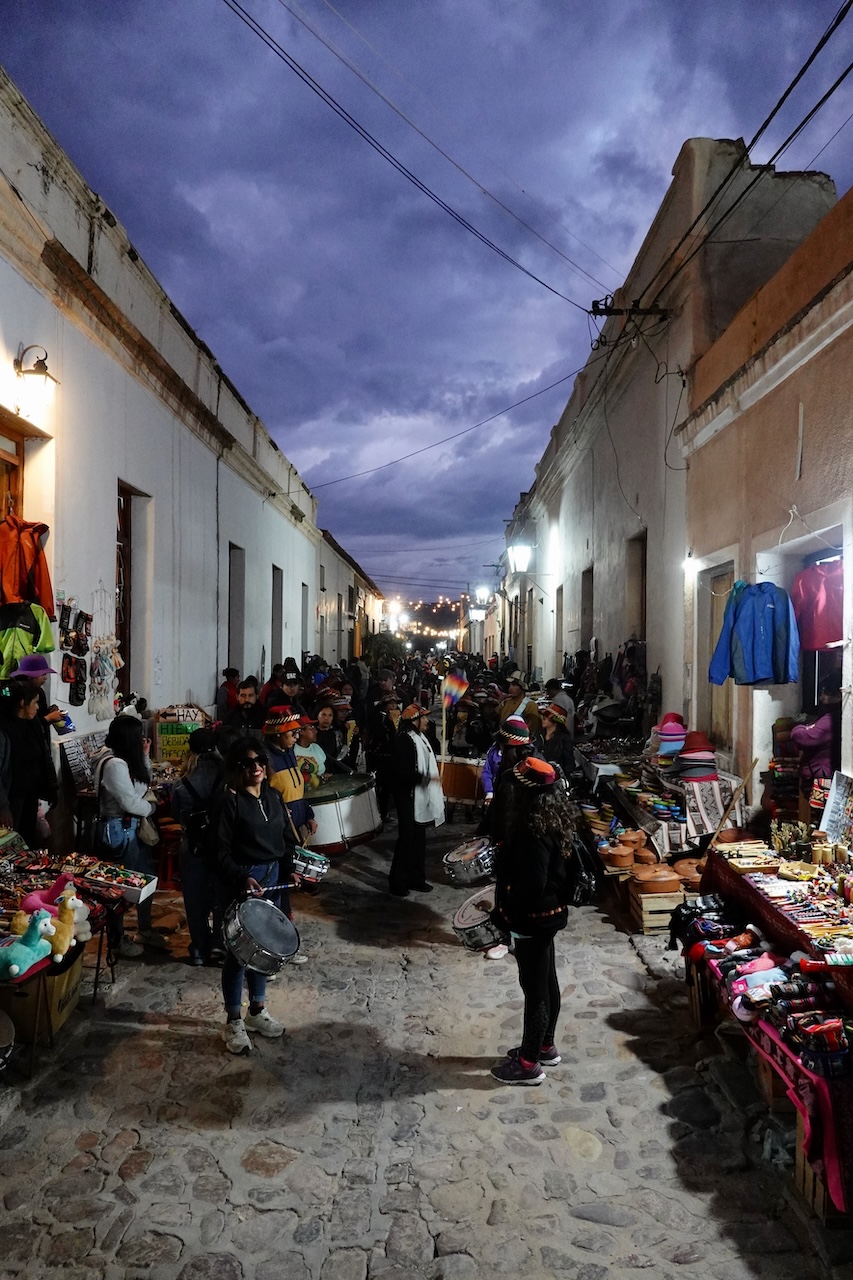
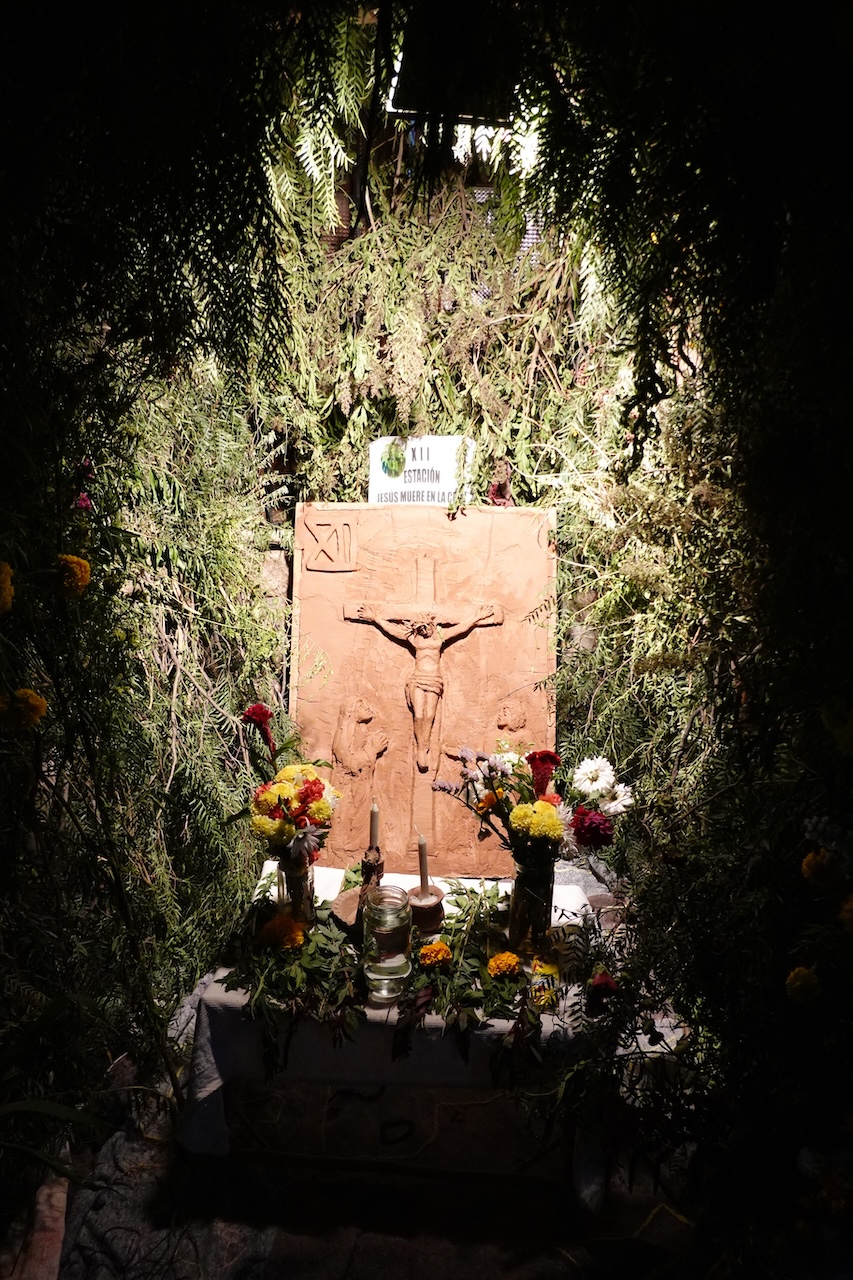
Fortunately, the sun shines almost continuously during the day. At the 3000 meters where we are now located, this creates a wonderful temperature. Summery, but not too hot. We have arrived at the Bolivian altiplano (high plateau) and the route to the border is still only an undulating road. We camp high above a river and see a girl herding goats with her toddler brother on the other side. On our last cycling day in Argentina we finally see llamas and alpacas in large numbers! With pink bows in their ears (as if they have won a beauty contest), they (especially the young ones) frolic across the plain. Giraf and we are amazed!


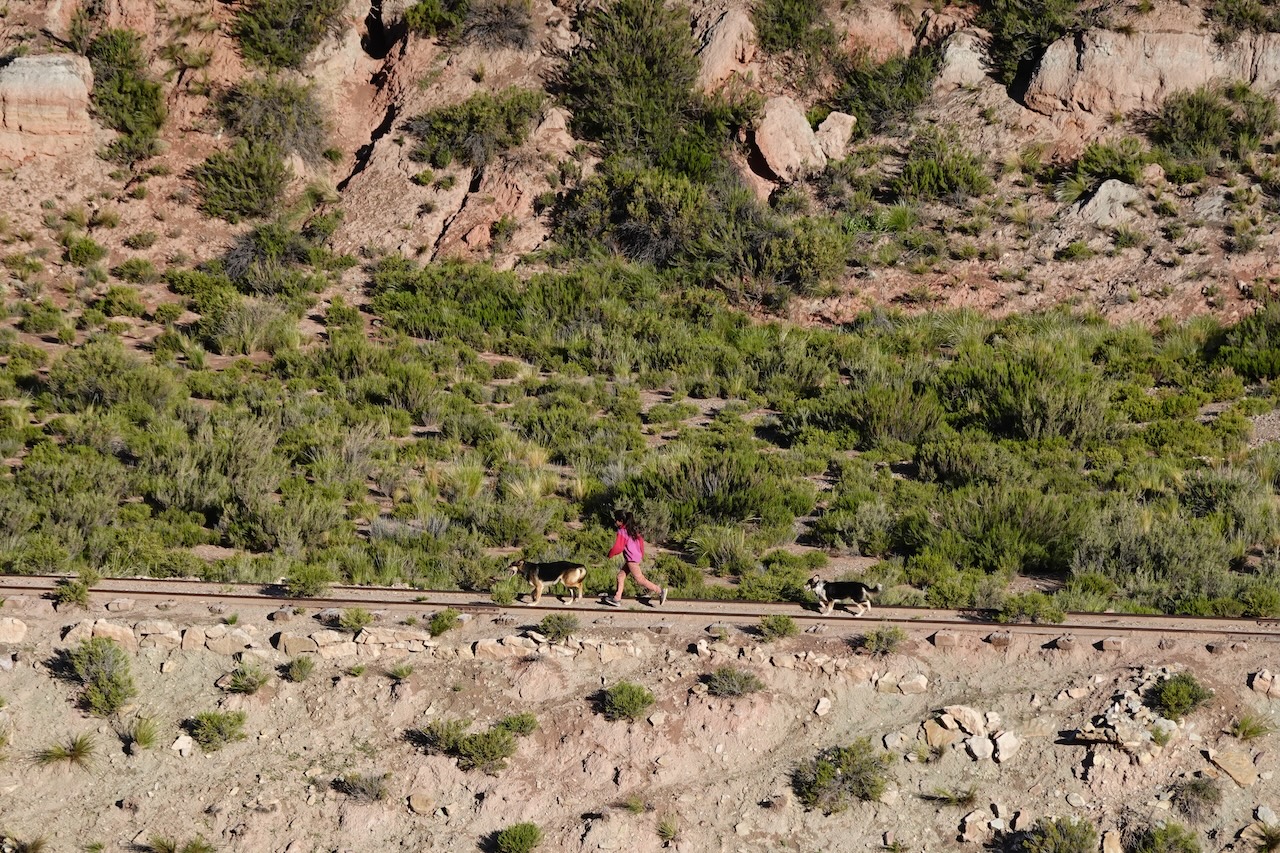
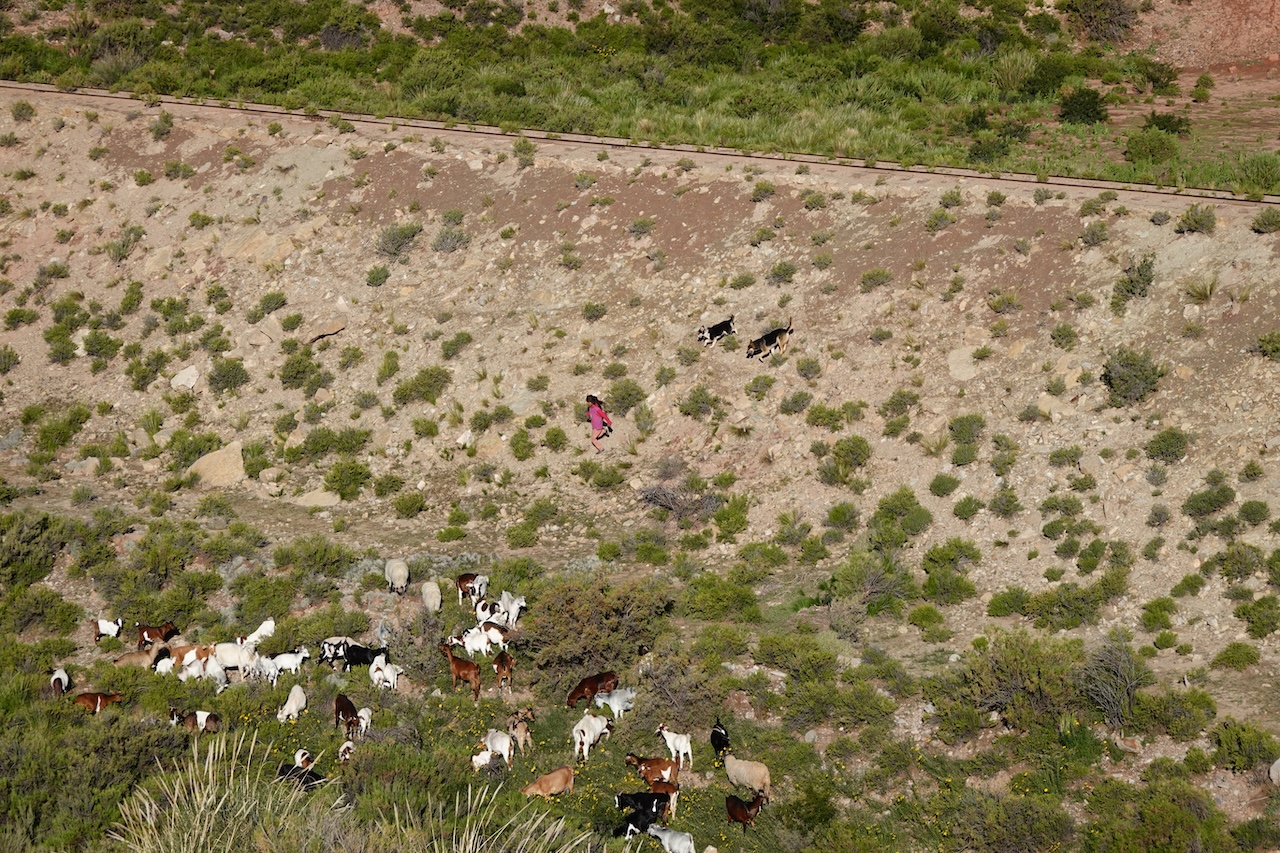
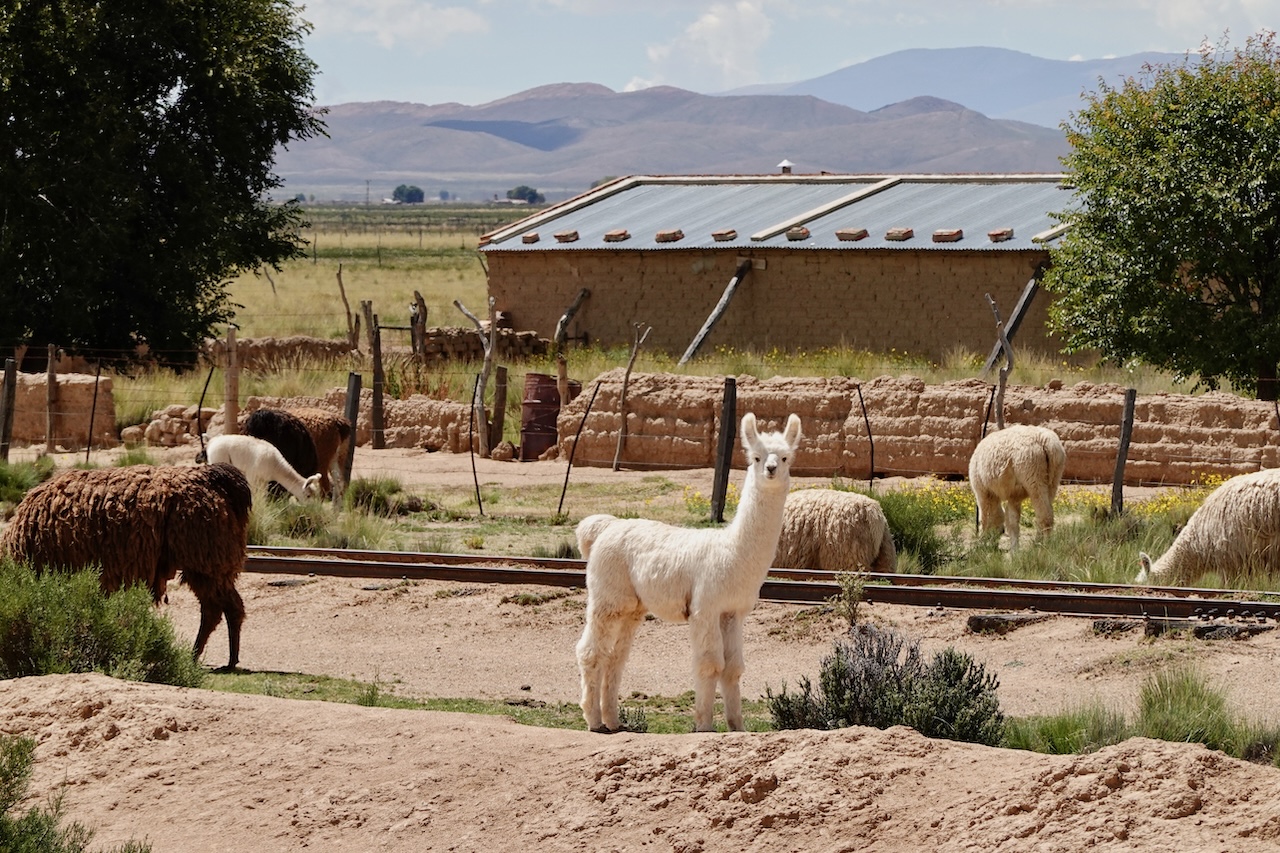
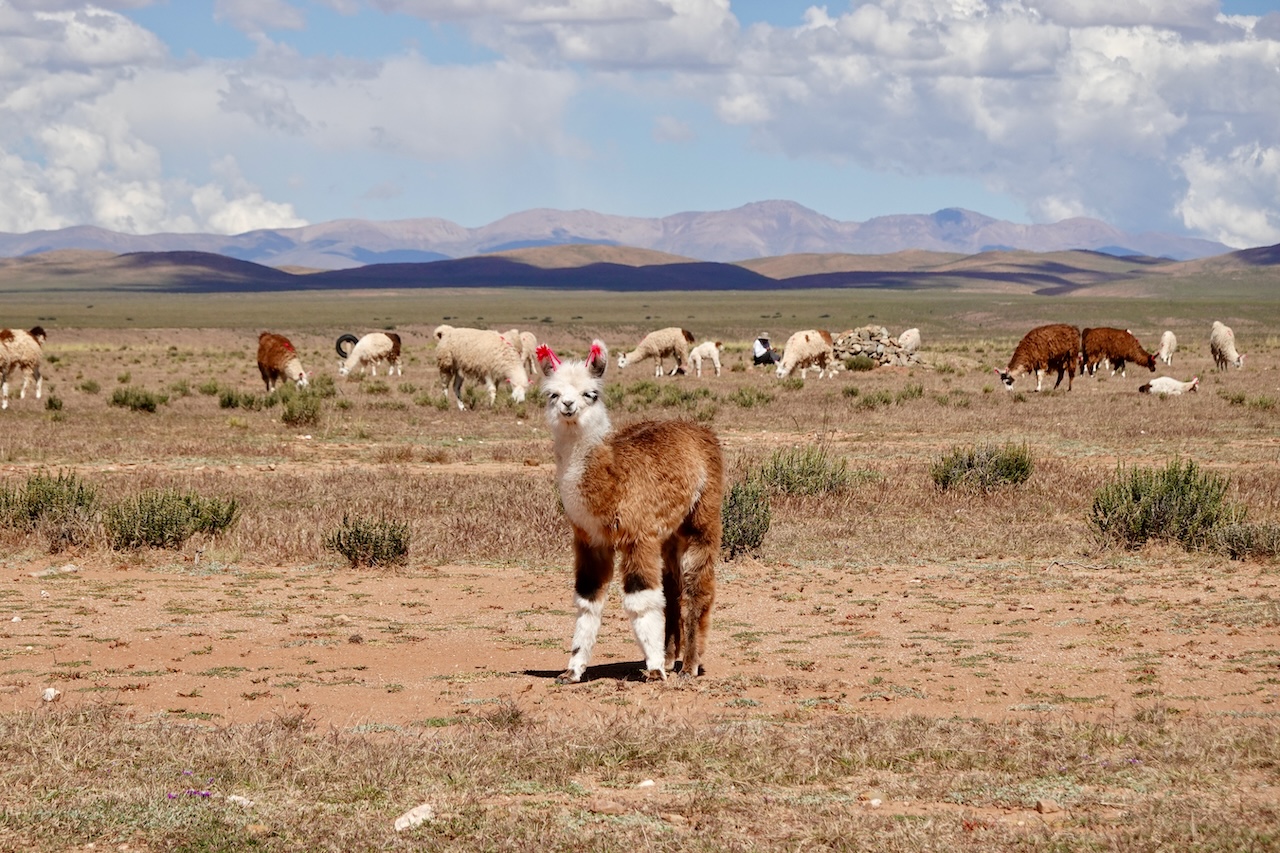
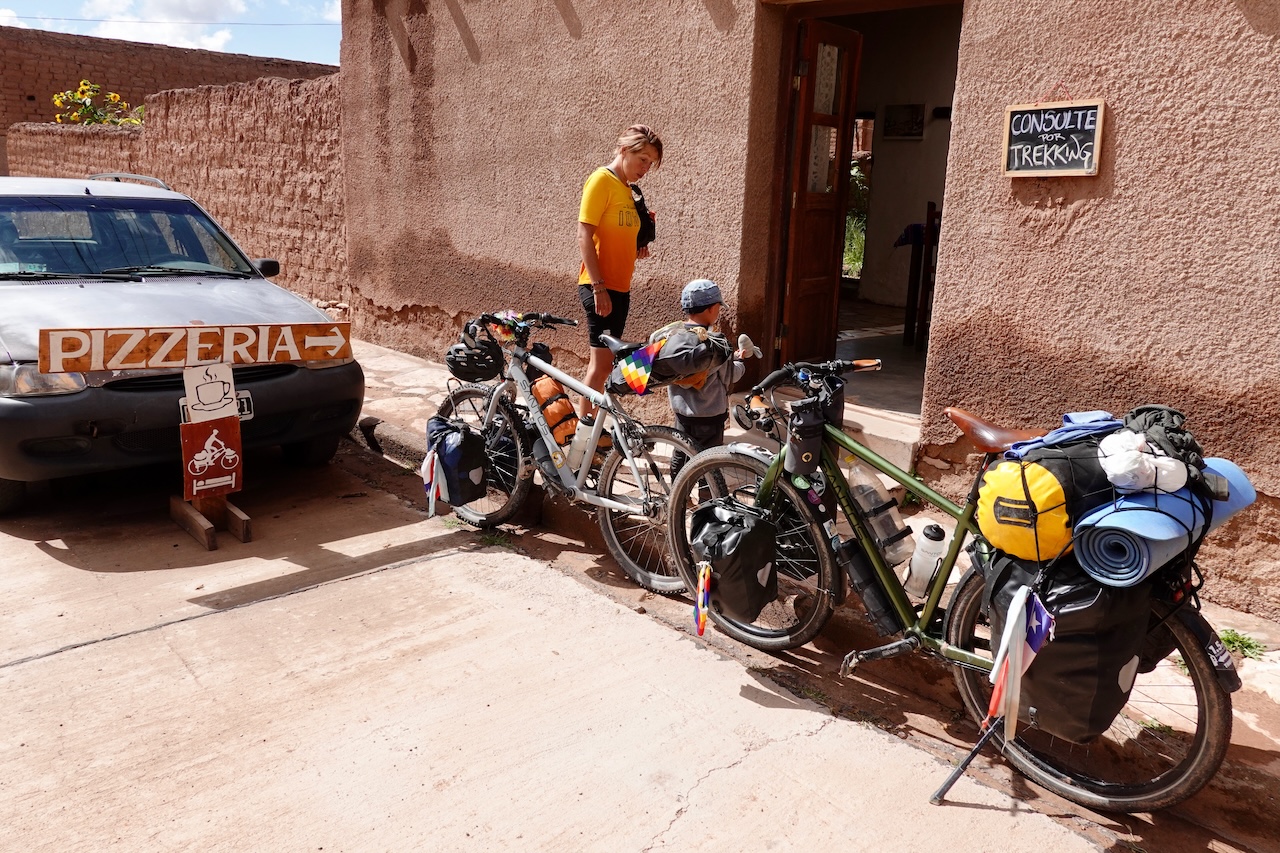
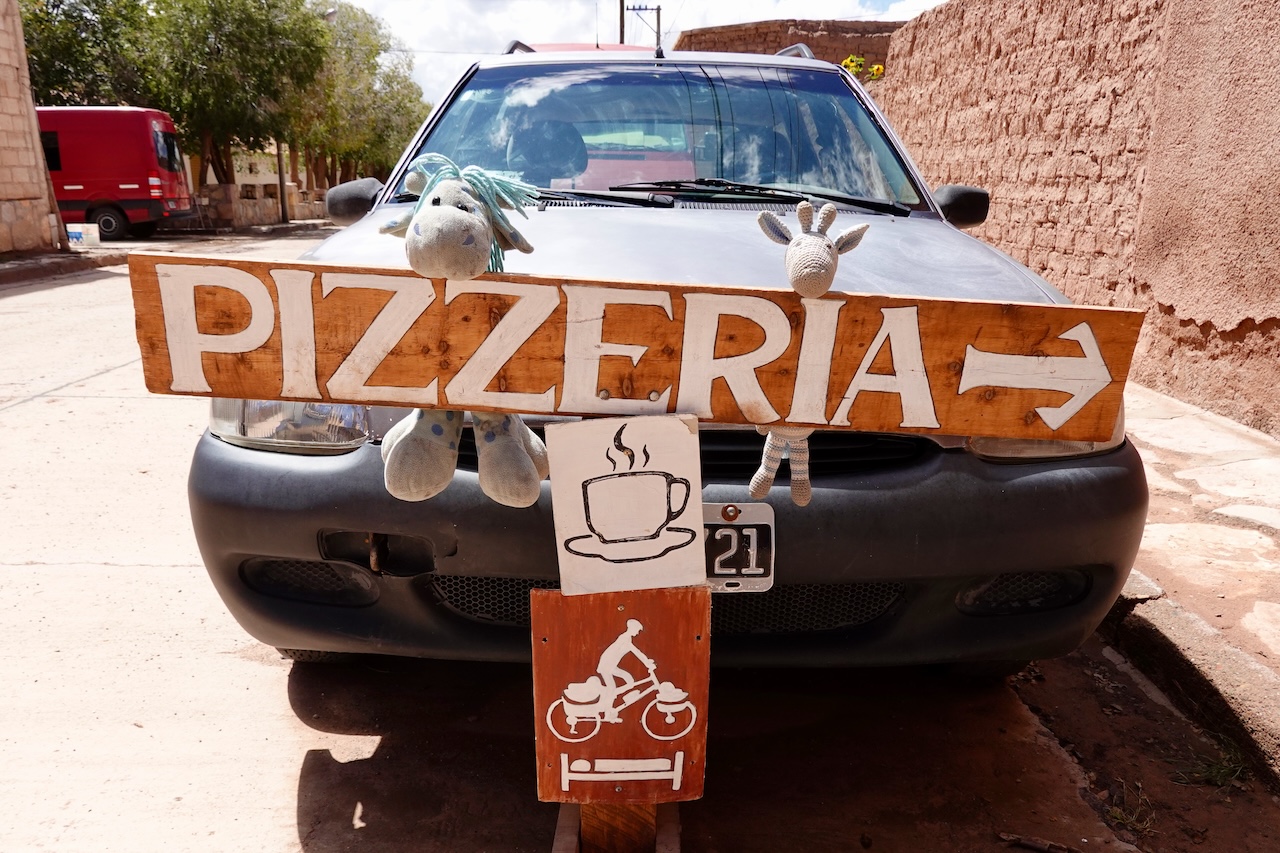
In the border town of Quiaca we get to pitch our tent on the grounds of the church. It is located next to the plaza but is locked at night so it’s a safe and quiet place (we think). However, at midnight we are woken up by a brass band! For about half an hour the sound gets closer and closer until the gang comes to a standstill and silence about 100 meters from us, on the plaza.
It’s 7:00 in the morning… HOOTTOOTTETTOOTT DRUMDRUM. There’s the brass band again, with the same repetitive tune as last night. Once again he comes to a stop in the plaza, but this time not to silence. When we roll away from the parsonage with our bicycles an hour later, a grand ceremony is taking place in the street. It is the commemoration of the war for the Malvinas (the Falkland Islands). Although we understand that this war was never completely settled, there is one thing you cannot forget if you have traveled in Argentina. ‘LOS MALVINAS SON ARGENTINAS’. This can be read on signs throughout the country, along the road and at every completely unrelated sight.
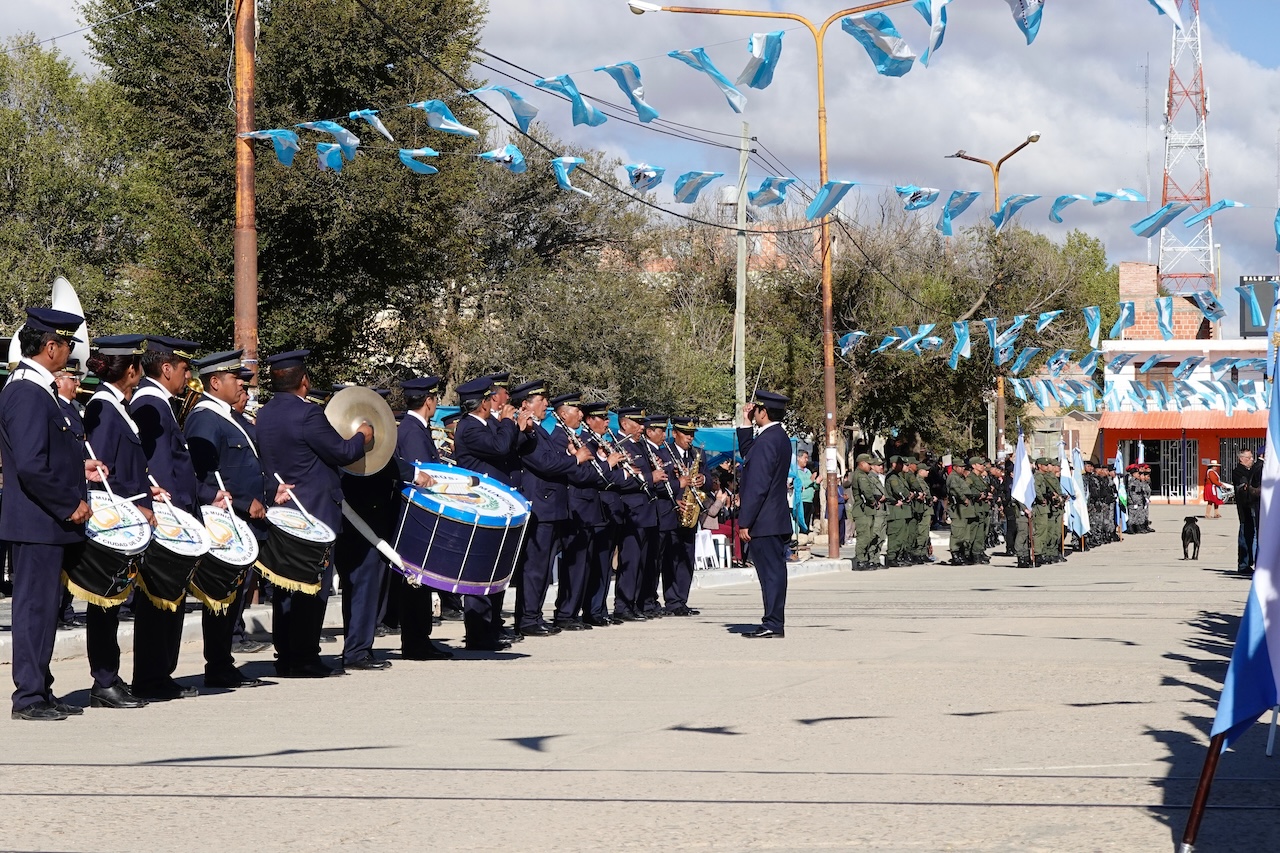

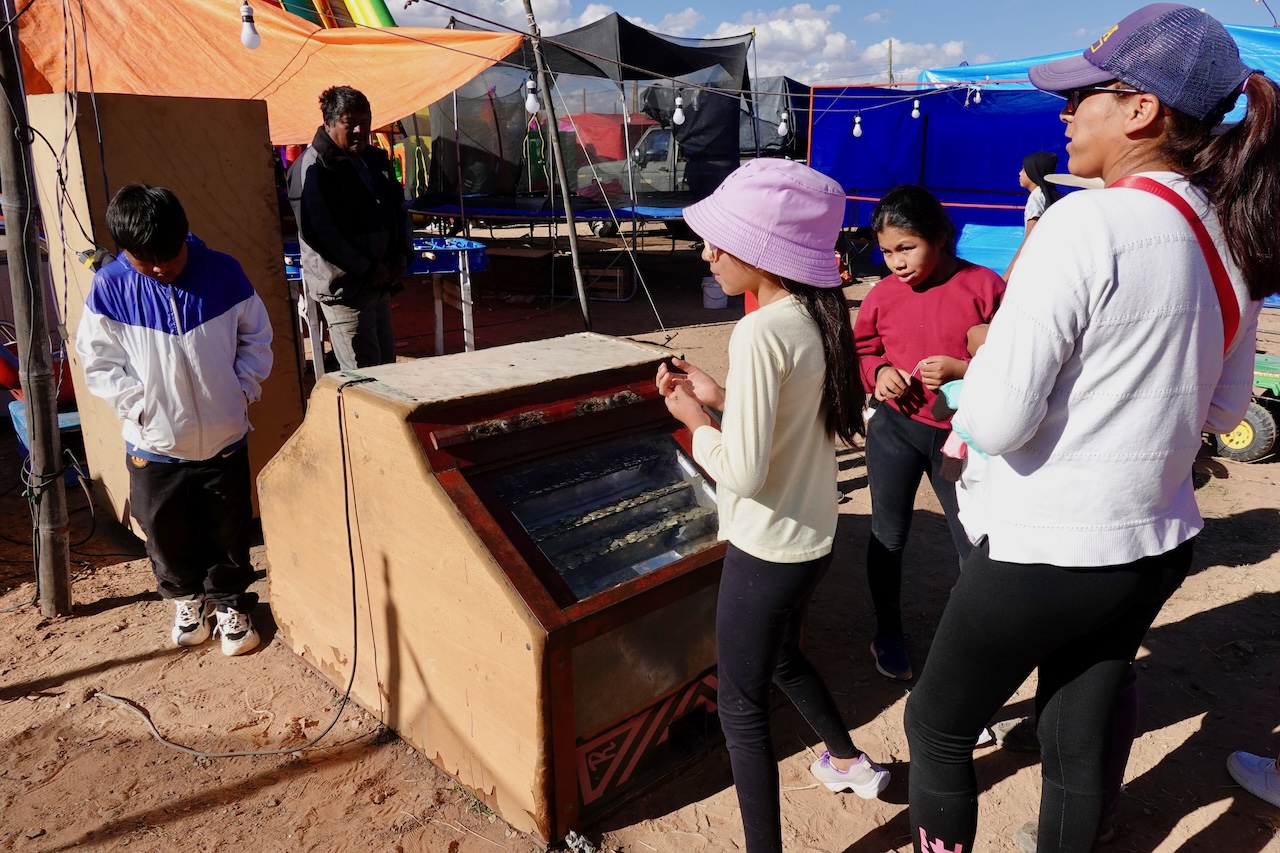
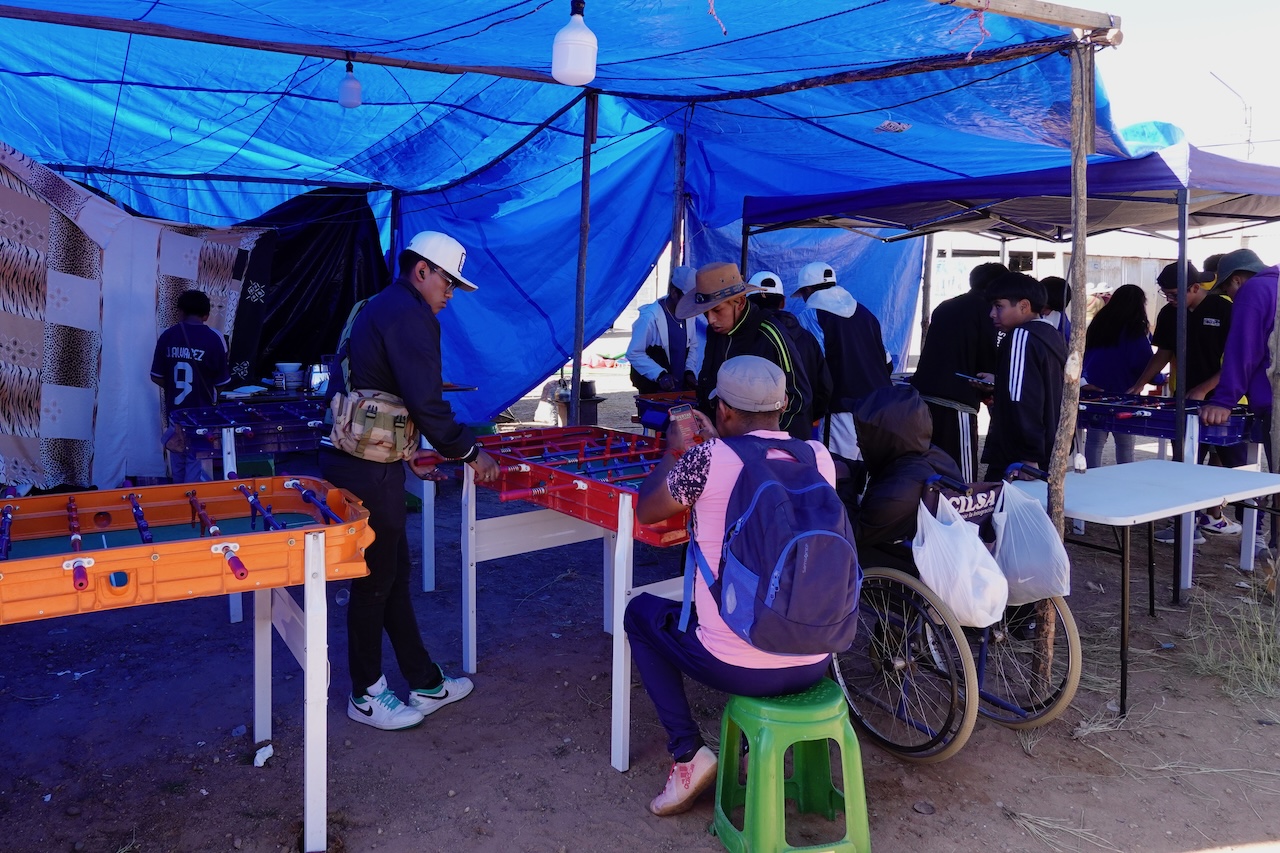
After spending our last Argentinian pesos on alfajores (the multilayer chocolate cookies I loved so much), chips and peanut butter, we cycle to the border, to Bolivia! Men and women continuously run back and forth behind carts along a path that runs above the border posts. Chubby women in traditional skirts, knee-high socks and with long braids, men with round bellies hanging out from under their polo shirts and some slim sports enthusiasts on running shoes. The two-wheeled carts are fully loaded with goods. Is this how goods are exported and imported here? With dozens of running men and women instead of letting the truck cross the border? Perhaps it is only trade between the two border towns that are directly adjacent to each other only by a fence. It is a pleasant hustle and bustle in the border town. The colourfulness is immediately noticeable. We drink coffee and fruit juice in a tiny tent. We inquire about the passenger train to Uyuni, which, according to the official website, is one of the two routes in Bolivia that is still in use. However, to our disappointment, passenger trains have no longer been running since the pandemic and it does not look like they will be running again in the foreseeable future. People here prefer to travel by bus: faster, cheaper and (in their opinion) more comfortable.
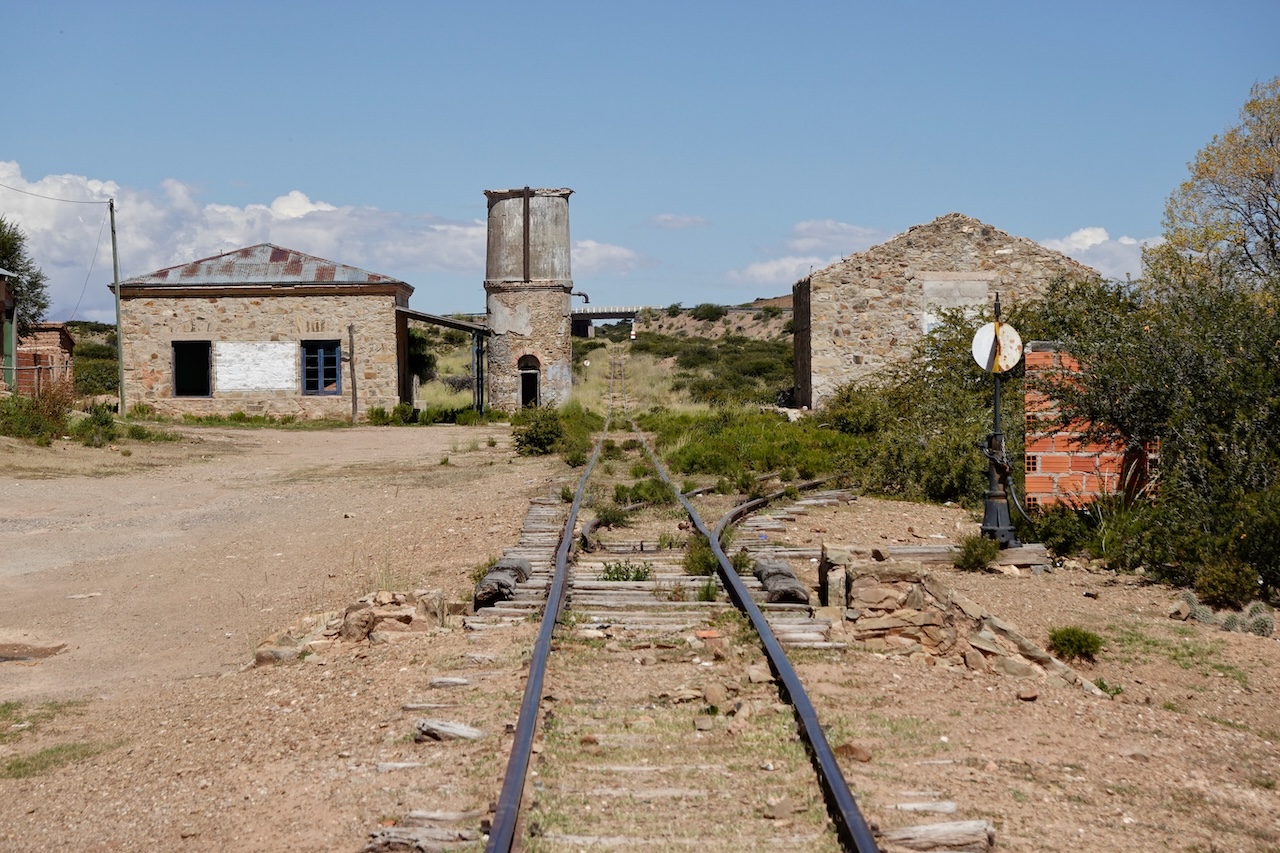
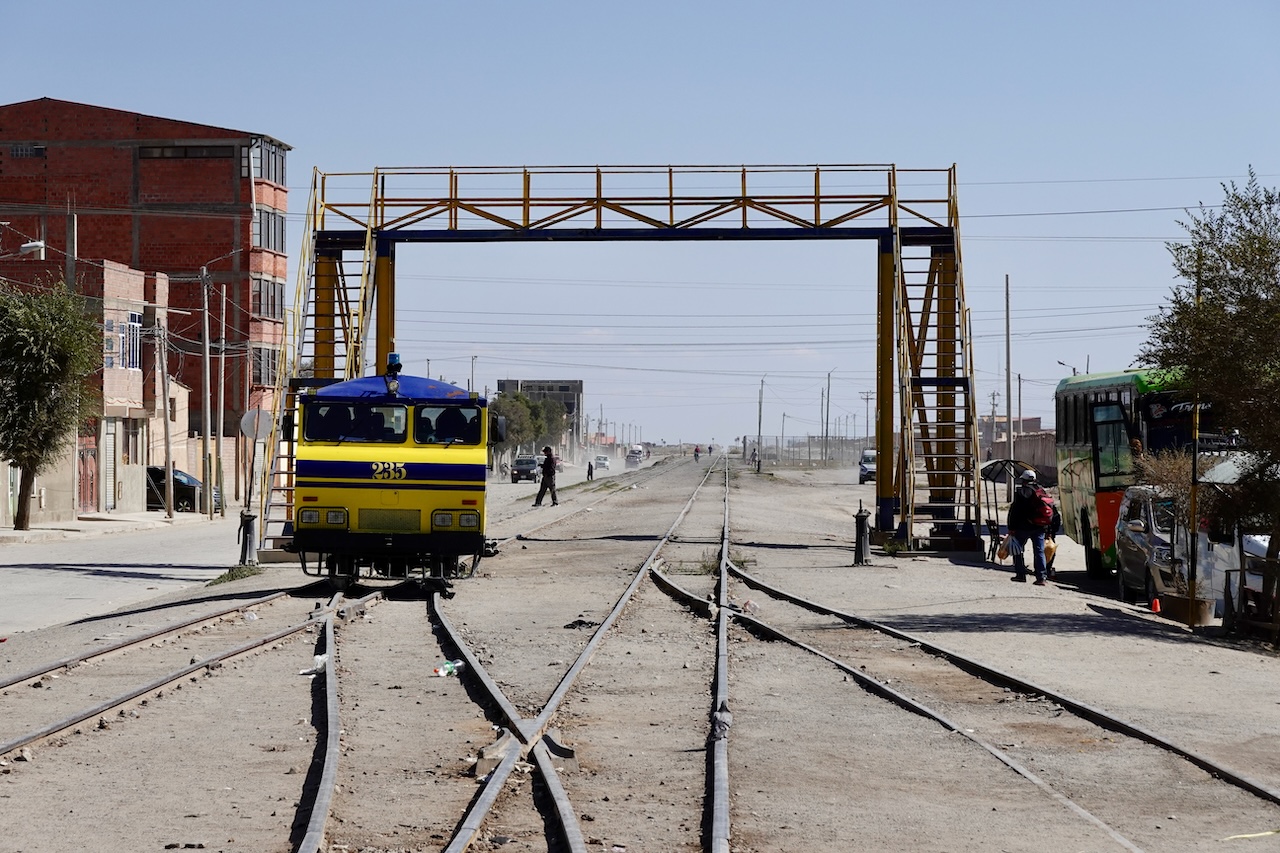
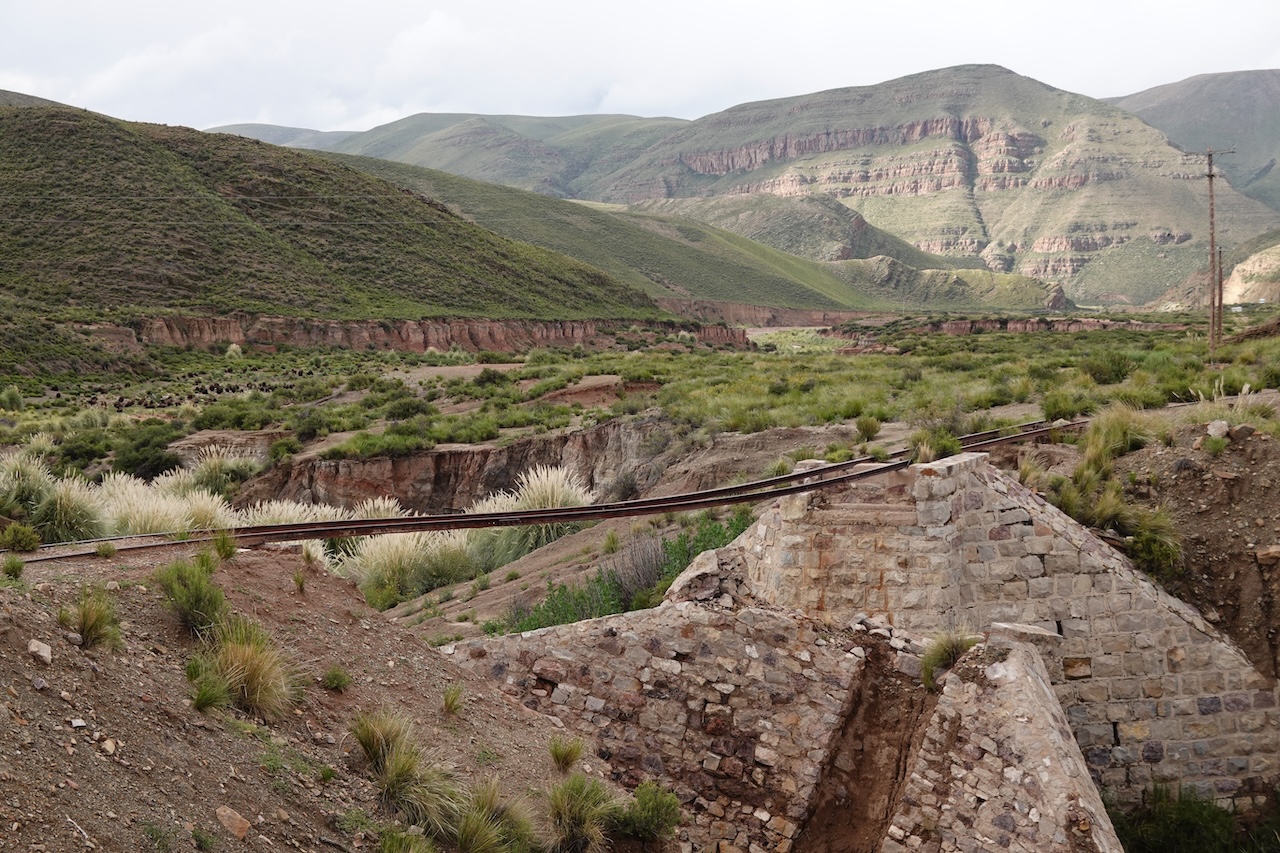

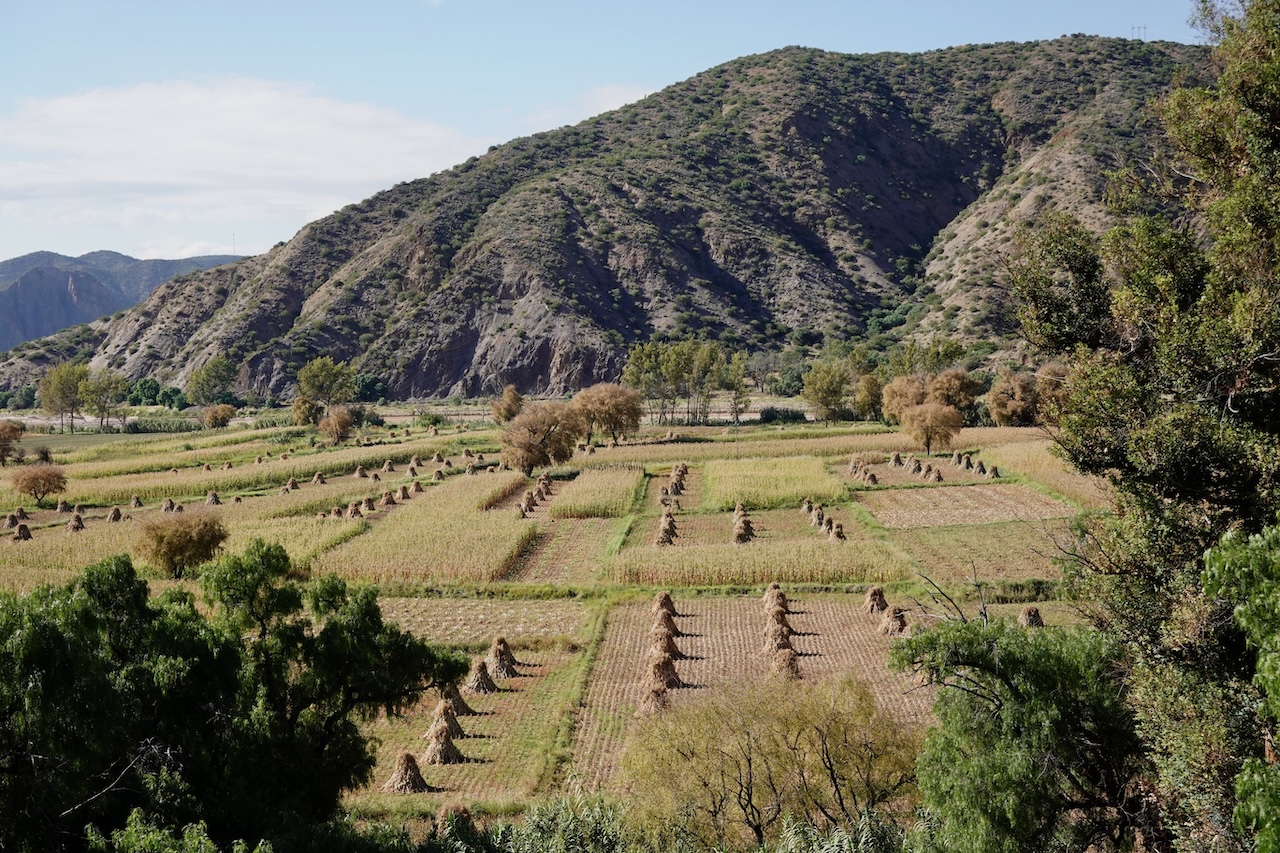
In two days we cycle to the next city, Tupiza. When we inquire about the bus times and prices for a trip to Uyuni, it turns out that a bus is about to leave for a small price. “You take care of the bikes and I’ll get food!” I say to Paul and run off towards the stalls. When I return a few minutes later with some white and fried rolls and a roll of cookies, Paul has almost already got our bikes in there. I quickly buy two cups of orange juice filled to the brim from a seller next to the bus and a minute later we are driving. As I walk to our seats I feel someone gently squeezing my bare calf. I look over and see an old lady without teeth, grinning with sparkling eyes. ‘What a cute granny’, I think. When the bus stops for lunch an hour later, the grandmother comes and sits next to me on a bench. We chat a bit. She is 90 years old, she confesses, after first trying to convince me she is 100. Every now and then she continues to pinch the skin of my bare leg and then bursts into toothless laughter. She thinks it’s funny that I’m sitting here in my shorts. According to her, way too cold at this altitude! We compare our hands (hers are tiny and wrinkled) and she says my skin here is turning as black as my cycling shorts. We are an attraction for other travellers who have nothing else to do during this stopover. 90 years old, going out alone on the bus and being able to have so much fun making your own jokes… an example.

Because of my recurring knee pain, we have to make choices; what do we cycle and what do we ‘skip’? We would like to cycle over the Salar de Uyuni. We have already seen so many great photos of it and heard good stories about it from other cyclists. While Paul works on his blog in the hotel room, I walk through the market in the city. Everything is for sale there and it is pleasantly busy. In Argentina we did most of our shopping in shops. ‘Tienda, kiosko, supermercardo, negocio, almacen’, all names for roughly the same type of local shops. However, this is the place to be it seems! I return with the ingredients for a garlic soup (which turns out to be a fiasco) and a bar of chocolate (which tastes like sugar with a hint of cacao). I ask at a tour agency about the current state of the Salar de Uyuni. During the rainy season it is often covered by a layer of water. It does not soak into the soil but must evaporate over time. It’s just after the rainy season… can we go there yet? I have to give Paul the bad news: there is still a large layer of water on the salt. There are dry stretches, but it is impossible to cross the plain by bicycle at this time. Not to mention how harmful such a saltwater spray would be for our bicycles.
We’re a bit bummed about it. The next day at the end of the afternoon we decide to cycle to the salt flats without luggage. It is a beautiful sight and we take some pictures. All around us we see tourists on tour driving through the lakes in jeeps. That can’t be good for those cars… The sun sets bright red in the salt and in the dark we cycle the flat 22 kilometers back to our hotel. I check about seven pizzerias on the central square. We’d really like to have a pizza in the hotel room. But they are all too expensive for our taste. Not surprising, because it is a tourist hotspot here and everything is designed accordingly. Only Westerners sit at the tables with their phones and laptops on the table. We cycle a few streets back where we had previously spotted the busy local eateries. Chicken, chicken and more chicken! Then just chicken, just this once? I ask for a leg. On the rare occasions that I do eat meat, I prefer it to have a bone, so the animal and body part remain recognisable. We actually enjoy it quite a bit and look at each other with a smile. We are both happy that we have a partner who would rather sit here on a plastic chair at a local place than among the other tourists in a ‘fancy’ restaurant.
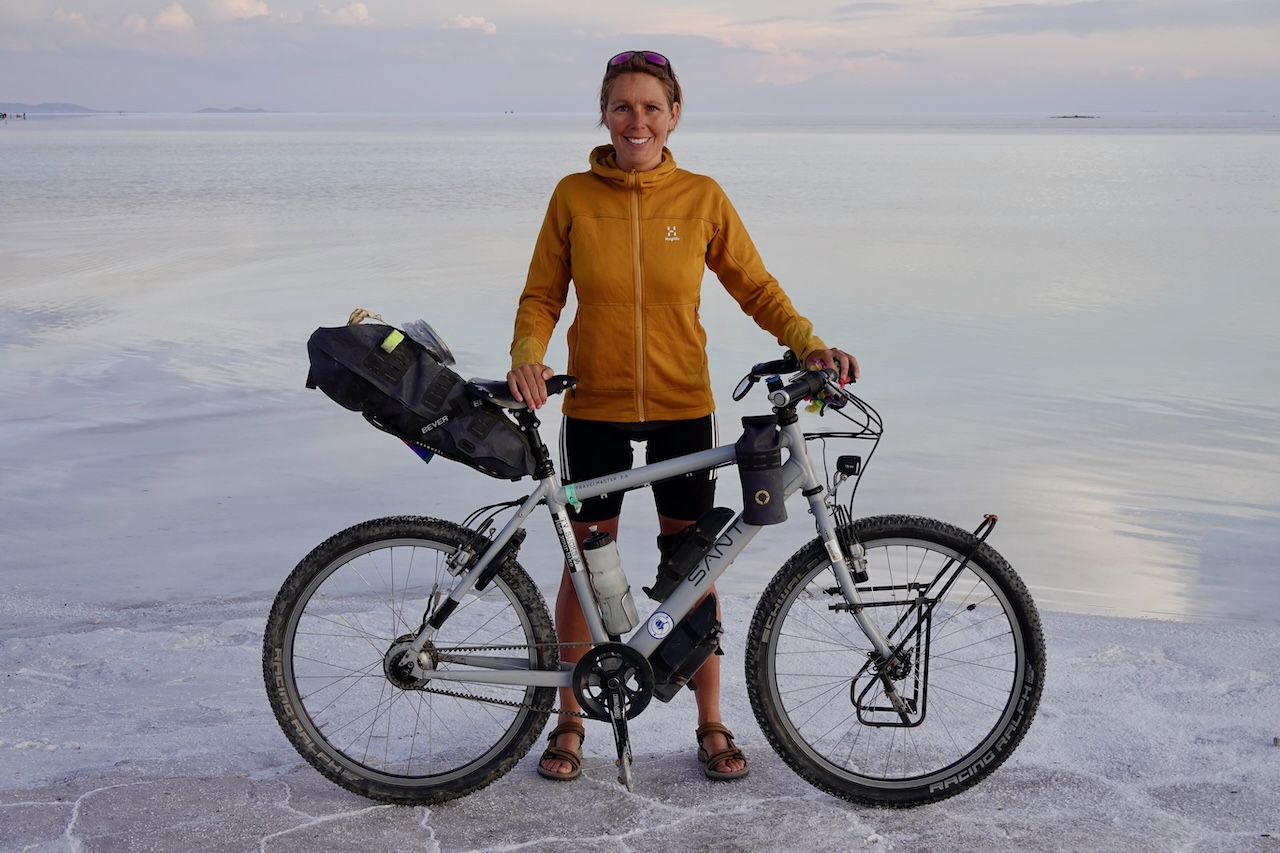

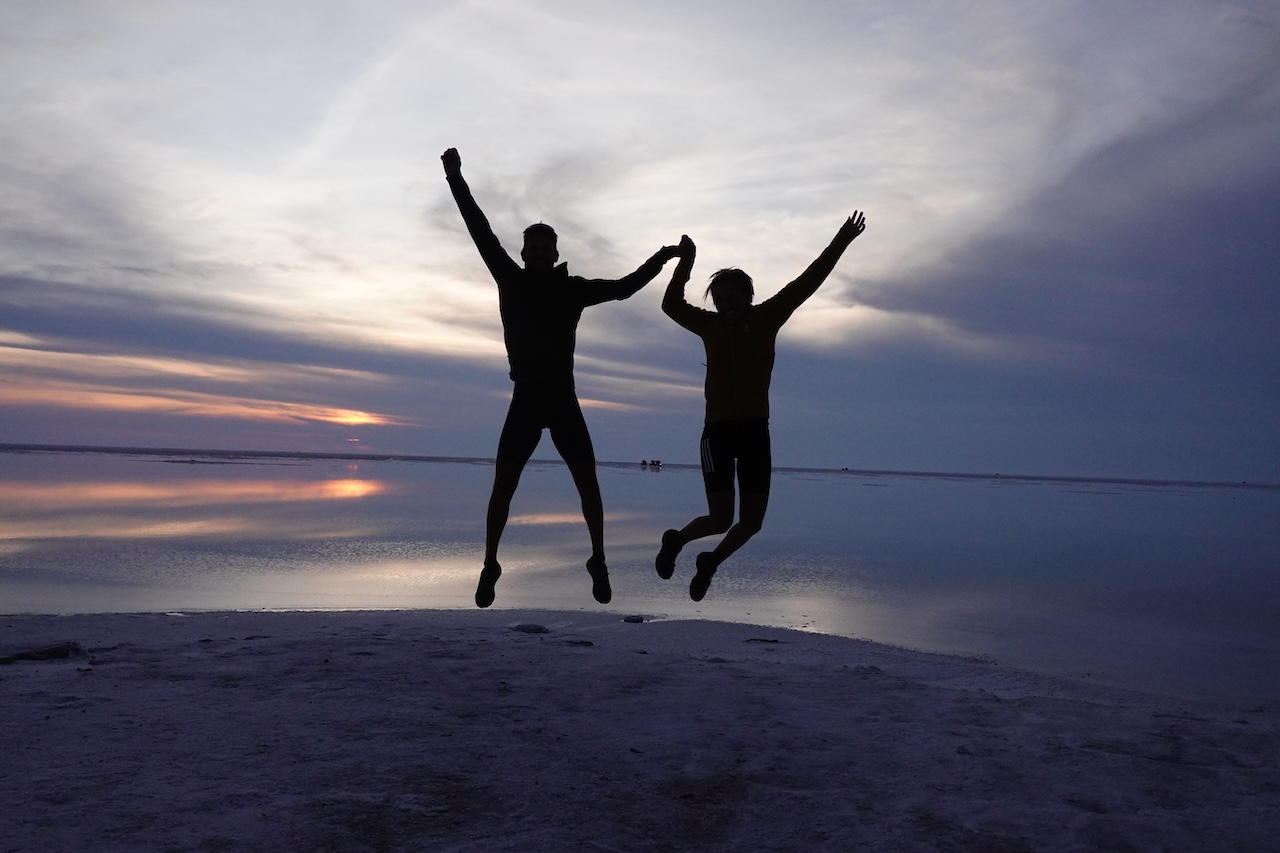
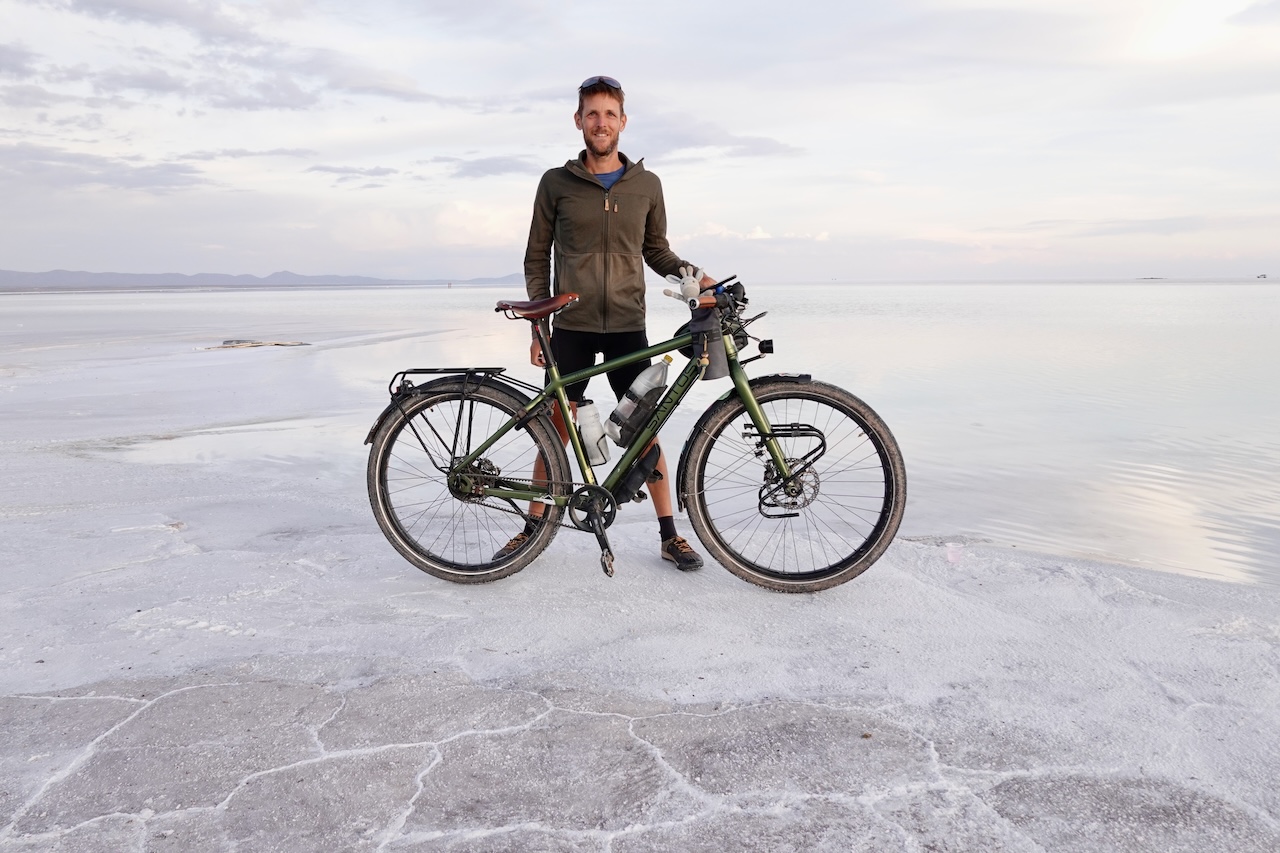
My knee is hurting more and more and since we can’t cycle here for what we came for and the surrounding area is a bit barren and dull, we decide to take a bus again. This time to Potosí. The highest city(!) in the world, it is claimed. A new city, a new hostel… I’m starting to miss our tent a bit. For tourists in Potosí there is one ‘must visit’, the mines. Both Paul and I question the ethics of such a visit. These mines date from the 16th century when the Spanish occupiers discovered silver in the mountains around Potosí. In no time they put the Indian population to work as slaves in silver mines. They supplemented this local population with many enslaved people from Africa. All the silver was transported to Spain and Potosí itself grew into the largest and most prosperous city in South America.
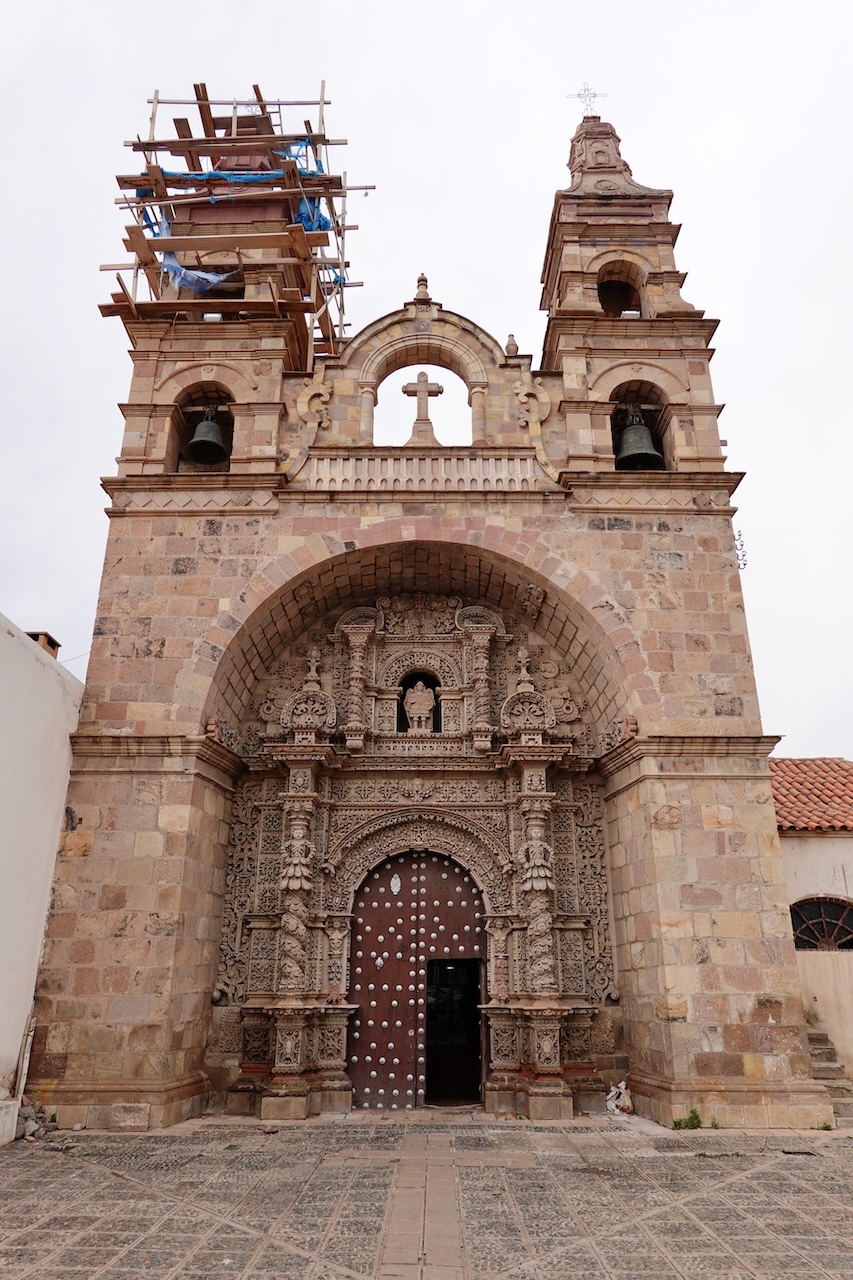
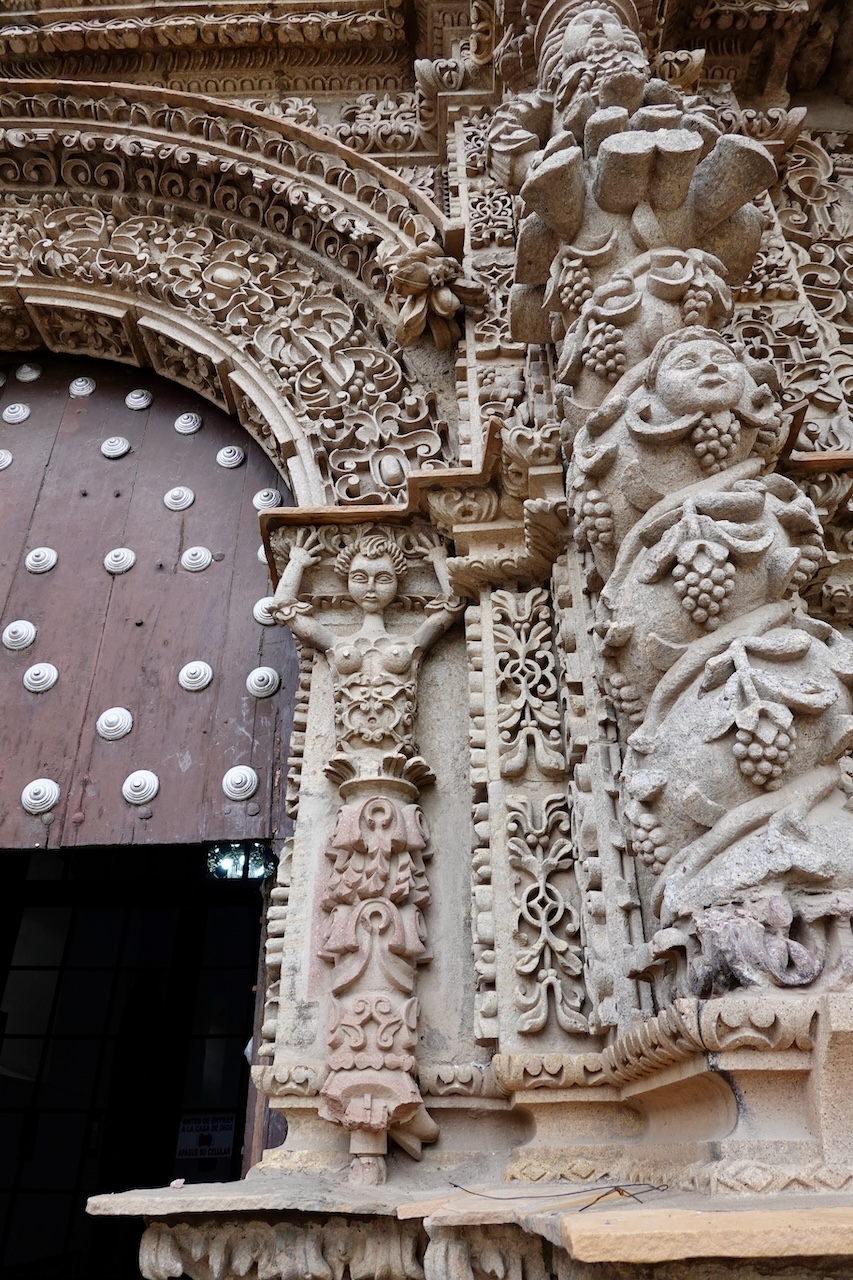
300 years and 8 million deceased slaves later, the silver was exhaust. The colonists left the city and only a poor local population remained. There’s still mining being done, but only by private entrepreneurs. Because Potosí is located at an altitude of 4067 meters, it has no other industry and 85% of the inhabitants are directly or indirectly dependent on mining. However, only small quantities of silver and mainly zinc, tin and lead are now mined. Yet the children of miners still grow up to become miners.
And as a tourist you can take a look at these still active mines. Among miners who have often worked in the mines since childhood, are sick and tired around the age of 50 and, despite all that, barely have any bread on the table. Do we want to see that? We wondered. Can we justify that to ourselves? We talked about this together and ultimately decided to choose an organization that (as far as we could find out) also supports the miners by offering them work as guides part of the time. We found the fact that there would be no miners working on Sunday, our day of visit, more of a relief than a disappointment.
Our guide is also a part-time miner’s part-time guide. He starts by taking us to the ‘miners’ market’ where some miners have breakfast and where coca leaves, cigarettes, soft drinks, dynamite, pure alcohol (to drink) and other miners’ ‘necessities’ are for sale. Coca leaves are said to help relieve the symptoms of altitude sickness. However, this is not necessary for the miners born in this region. They chew them all day long to prevent hunger and stay energetic. This way they don’t have to leave the mine for lunch, but can work all day long. We were invited to buy something here as a present, in case we met any miners on Sunday. Paul and I thought it would be worthwhile to get off the beaten track and, instead of opting for the recommended cigarettes, coca leaves and alcohol, we opt for a nice bar of soap, fudge and fruit drinks.
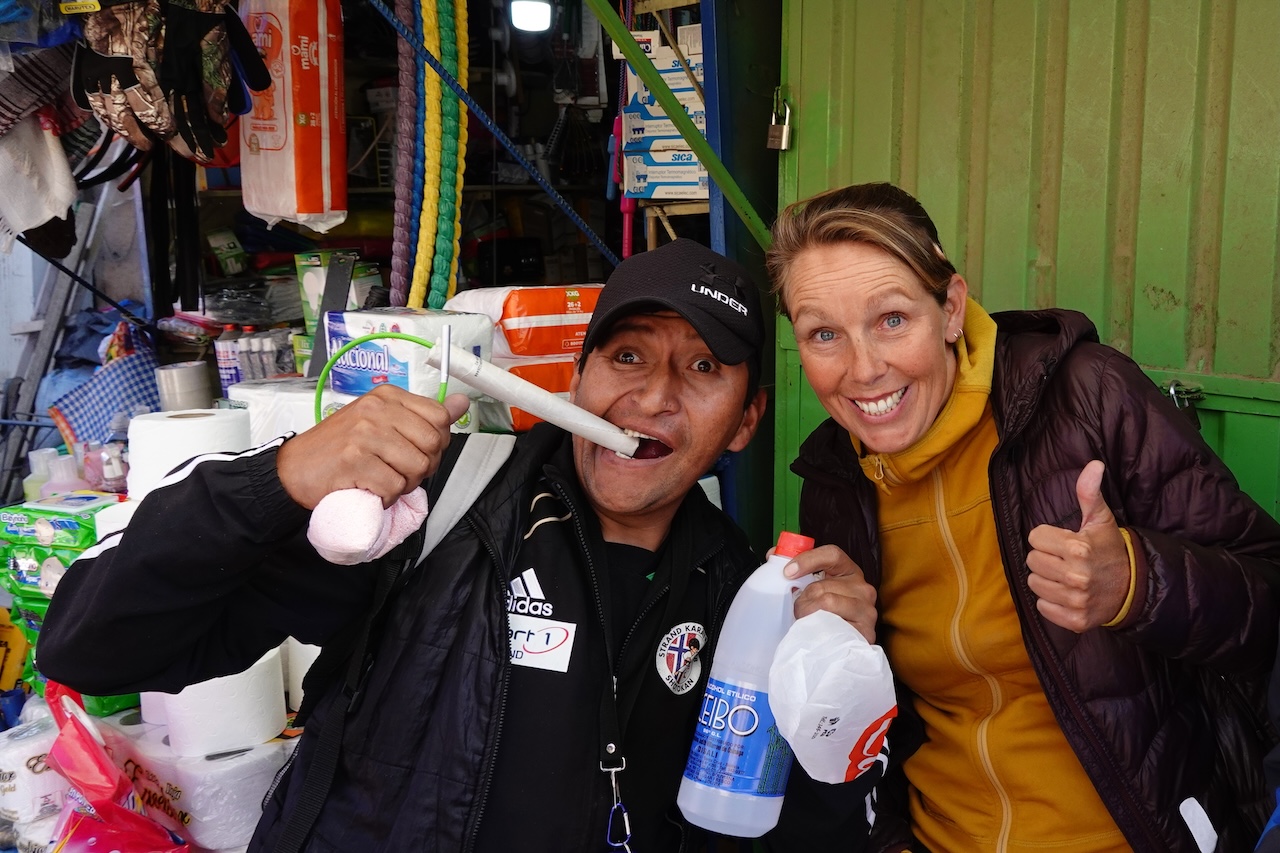
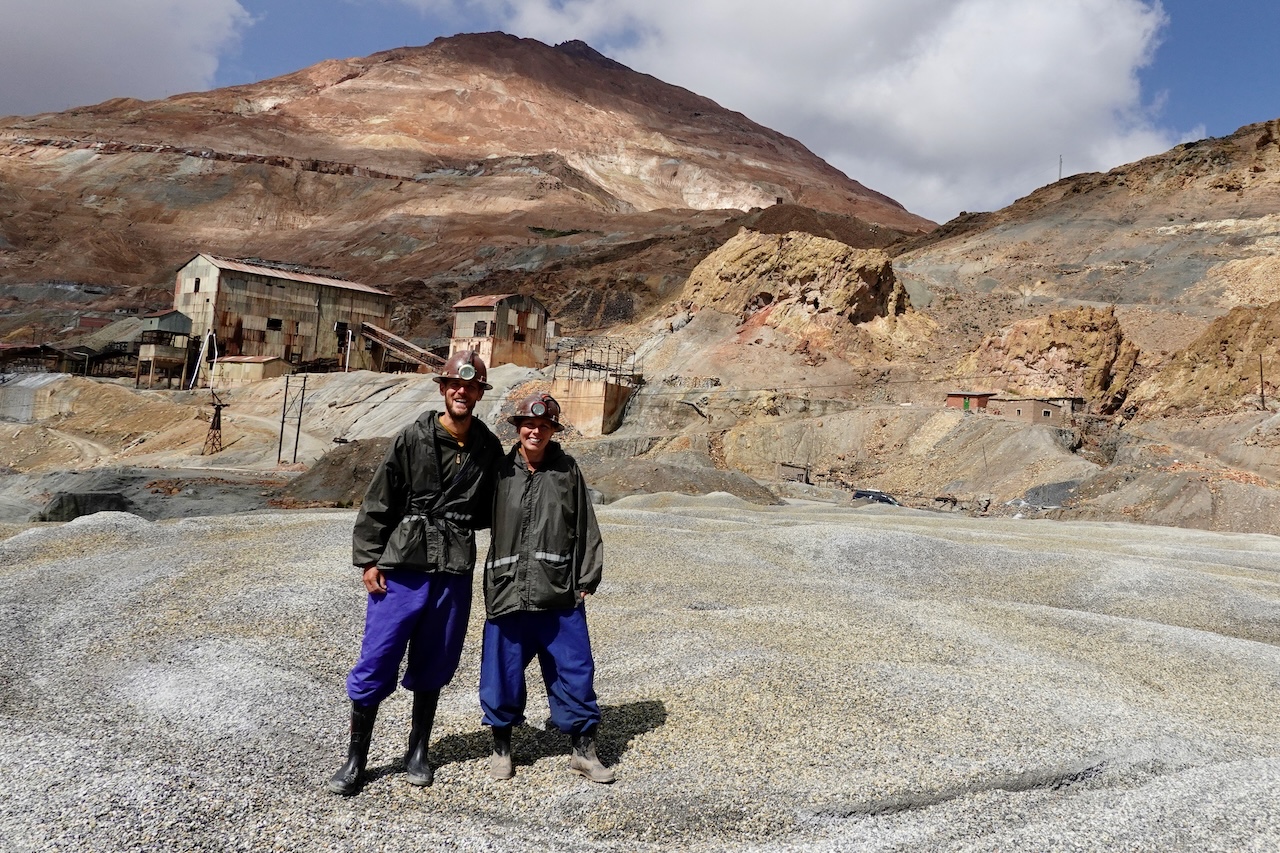
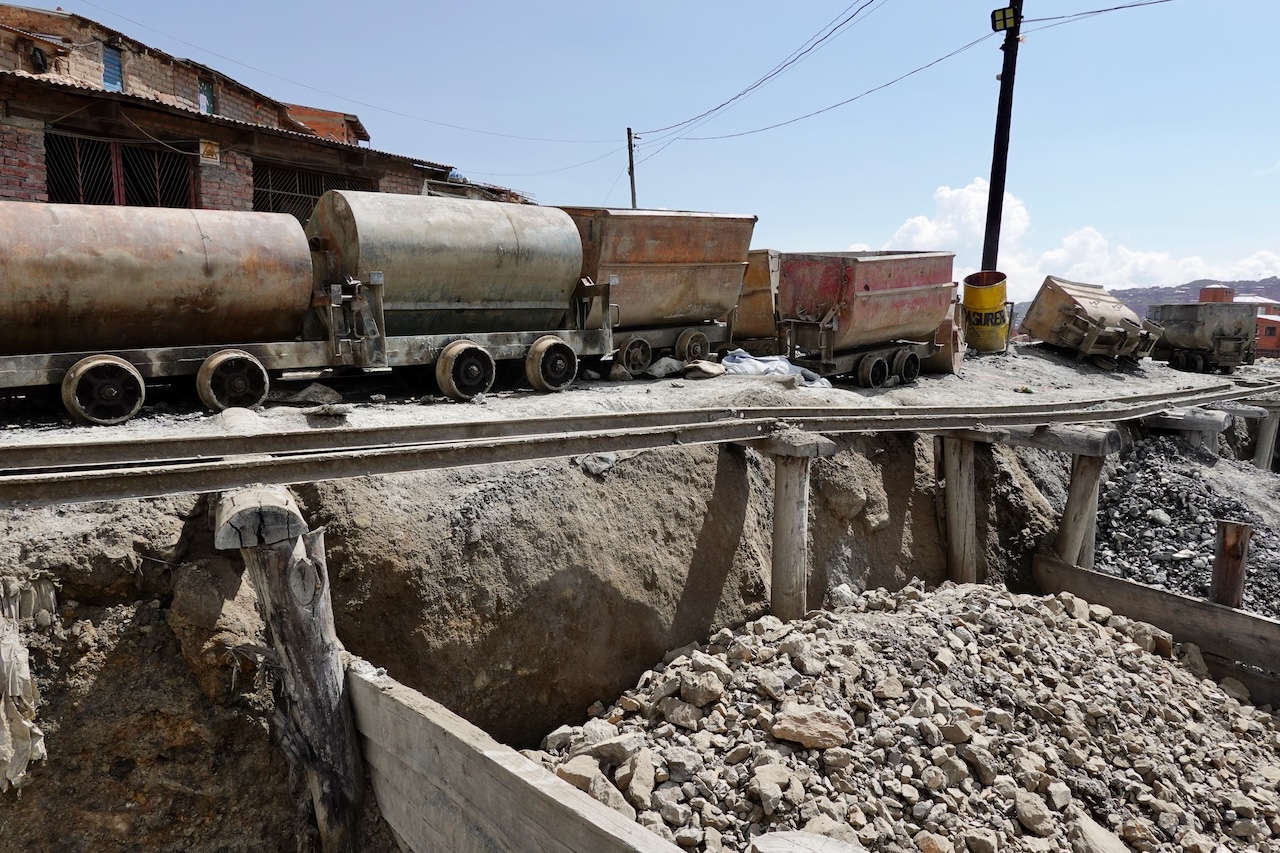
When we arrive at the mine we only meet women and children who live near the entrance to the mine. Miners’ widows, according to our guide. He asks us if he can give the ladies and children our fudge. According to miners, chocolate and other treats are for babies, he says. The miners are machos, they are proud of their work and remain silent about health problems and the (fatal) accidents that regularly occur. Our guide first takes us to an effigy of a crazy man in the mine. The god/devil of the miners. Every Friday he drinks pure alcohol and smokes cigarettes and makes offerings to ask for a large vein of silver that will make them rich. It is mainly a mess of empty liquor bottles, coca leaves and cigarette butts that is only cleaned up once a year when the mine is also blessed by the sacrifice of an even number of llamas. His blood is smeared at the entrance, through the corridors and over the stone man. An even number, for everything, because odd numbers (as well as women in the mine) bring bad luck. Our guide tells us about the opportunity to gain wealth in the mine. Mining is completely based on ‘Good Luck’, he says. Very occasionally it happens that a miner comes across a wide vein of silver in his passage. If you are the lucky ‘owner’ of that corridor, you can leave the mine work within a short time and before you know it you have villas in Buenos Aires, Santiago and a country house in Mallorca. But yes, you have to be very lucky. Most miners are very happy if they have bread on the table, can send their children to school and are not on a ventilator or infinite underground at the age of 50. The visit was worth it. We now better understand what the people here in Potosí depend on and how hard the lives of the still active miners really are. It remains almost unimaginable that daily hundreds of men disappear underground here, six days a week, for about 12 hours a day, in search of that little bit of silver, numbing themselves with cigarettes, alcohol and coca leaves to cope with that miserable work.
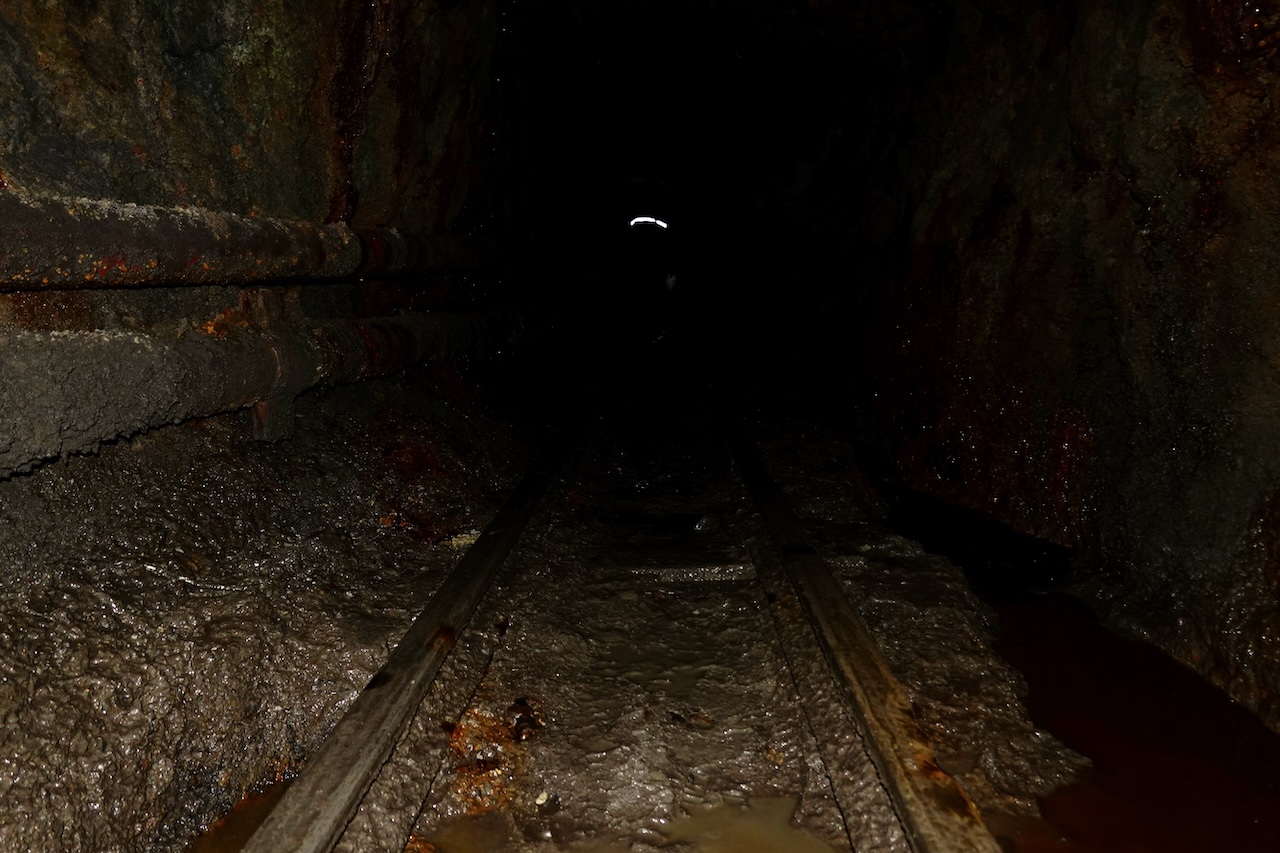
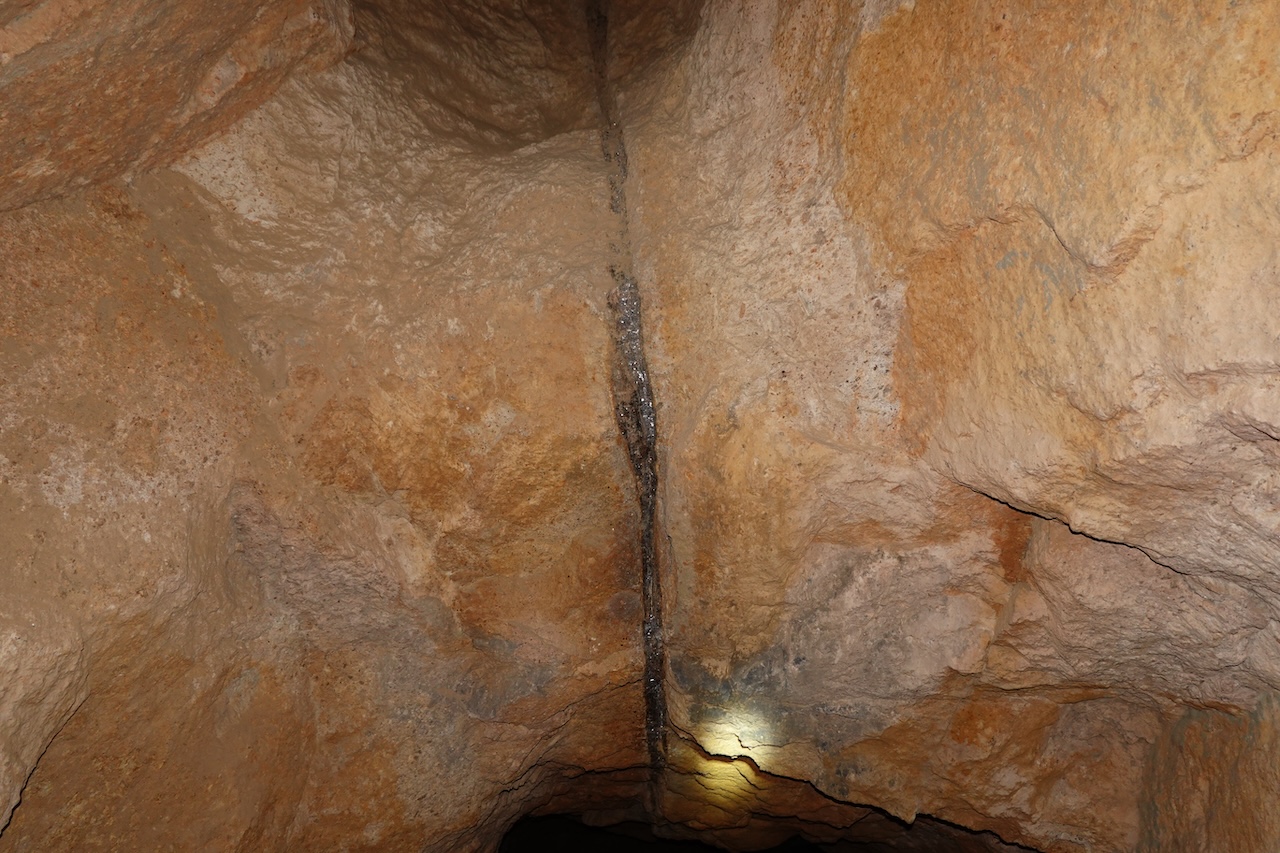
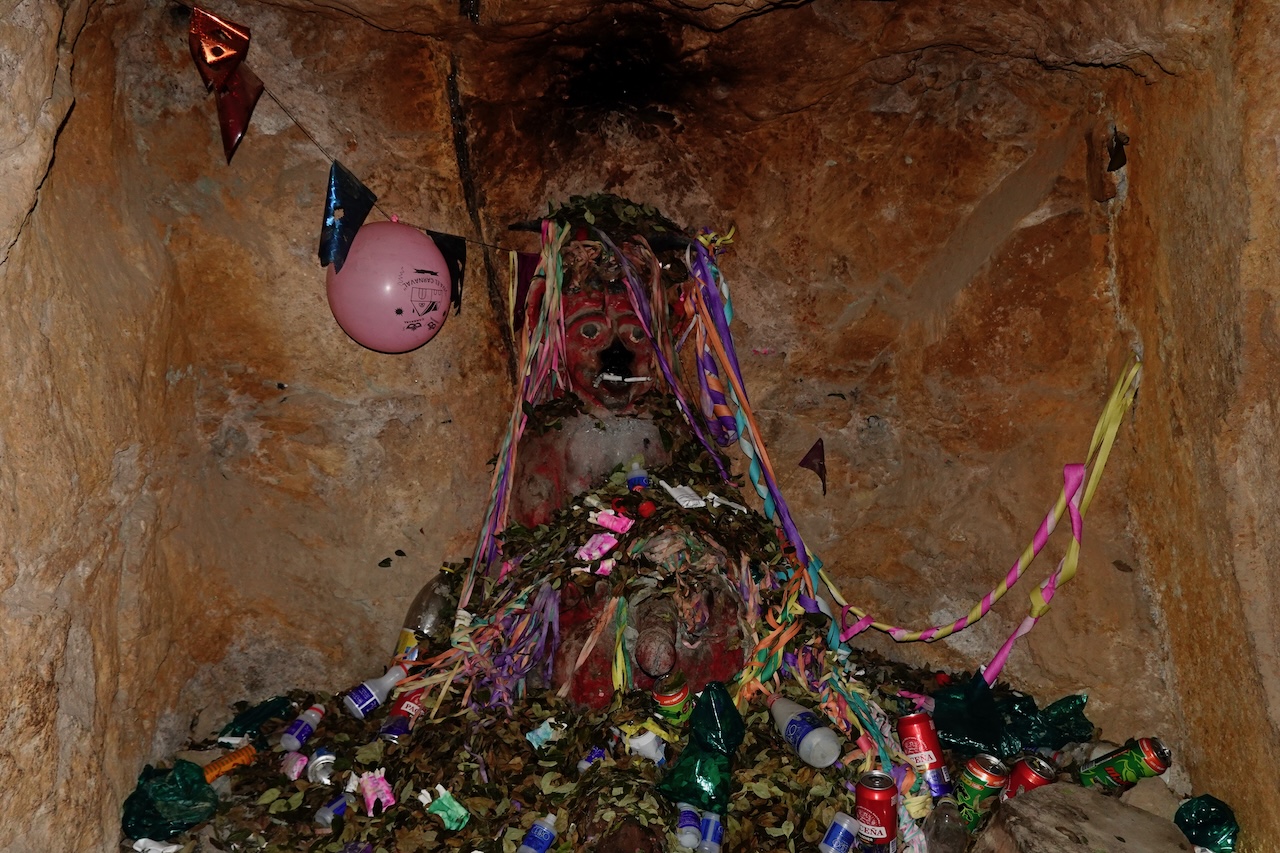
We have now made an appointment with the lady at the WorkAway address. We can go there in three days and it is a 140km bike ride to her location, more downhill than up. Every morning when we get on our bikes I experience it again. “It’s so WONDERFUL to be back on the bike!” I keep saying to Paul. I also enjoy crawling into our own house, our tent, again in the evening. The first evening in the yard of a small farm with some pigs and a gang of puppies. The second evening with a view of the ‘Puente Sucre’, an oversized suspension bridge to a small village on the other side of the river.

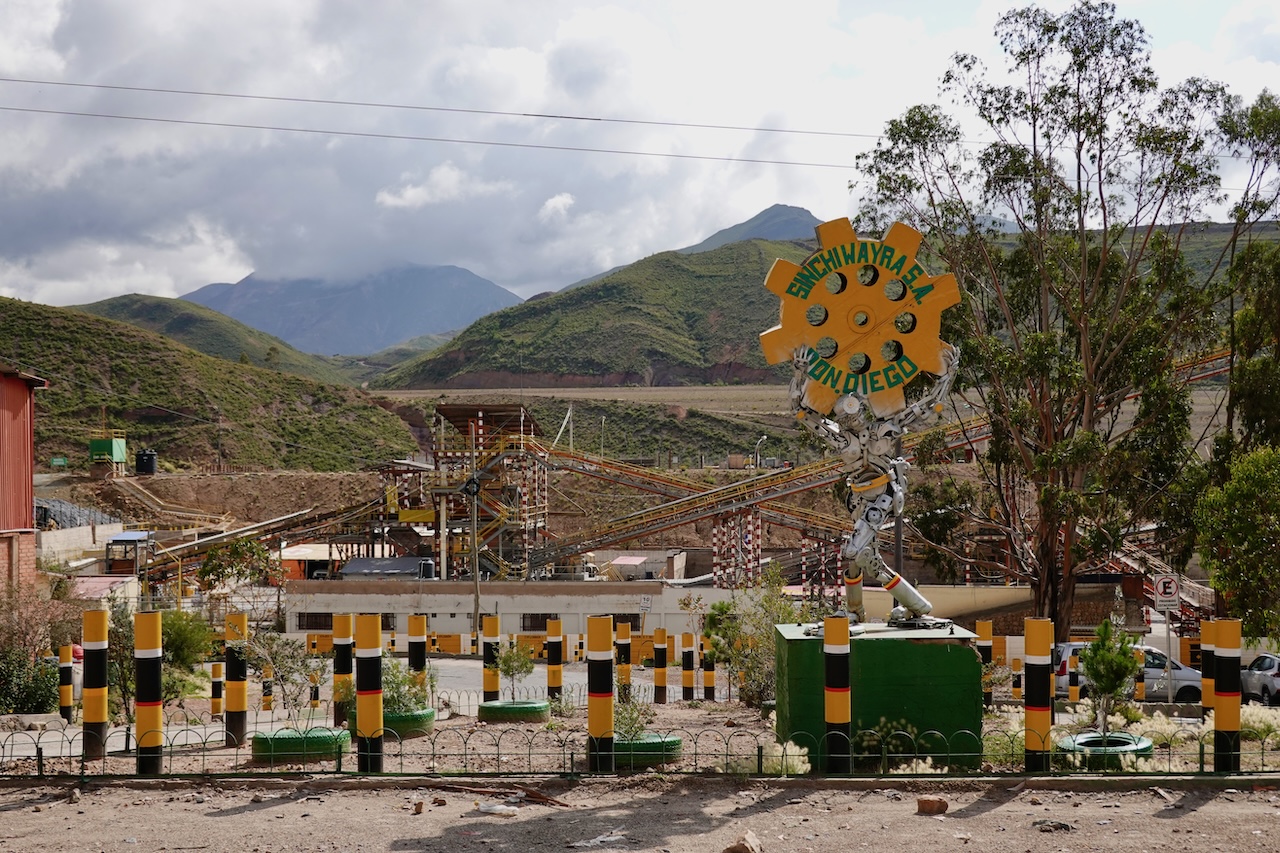
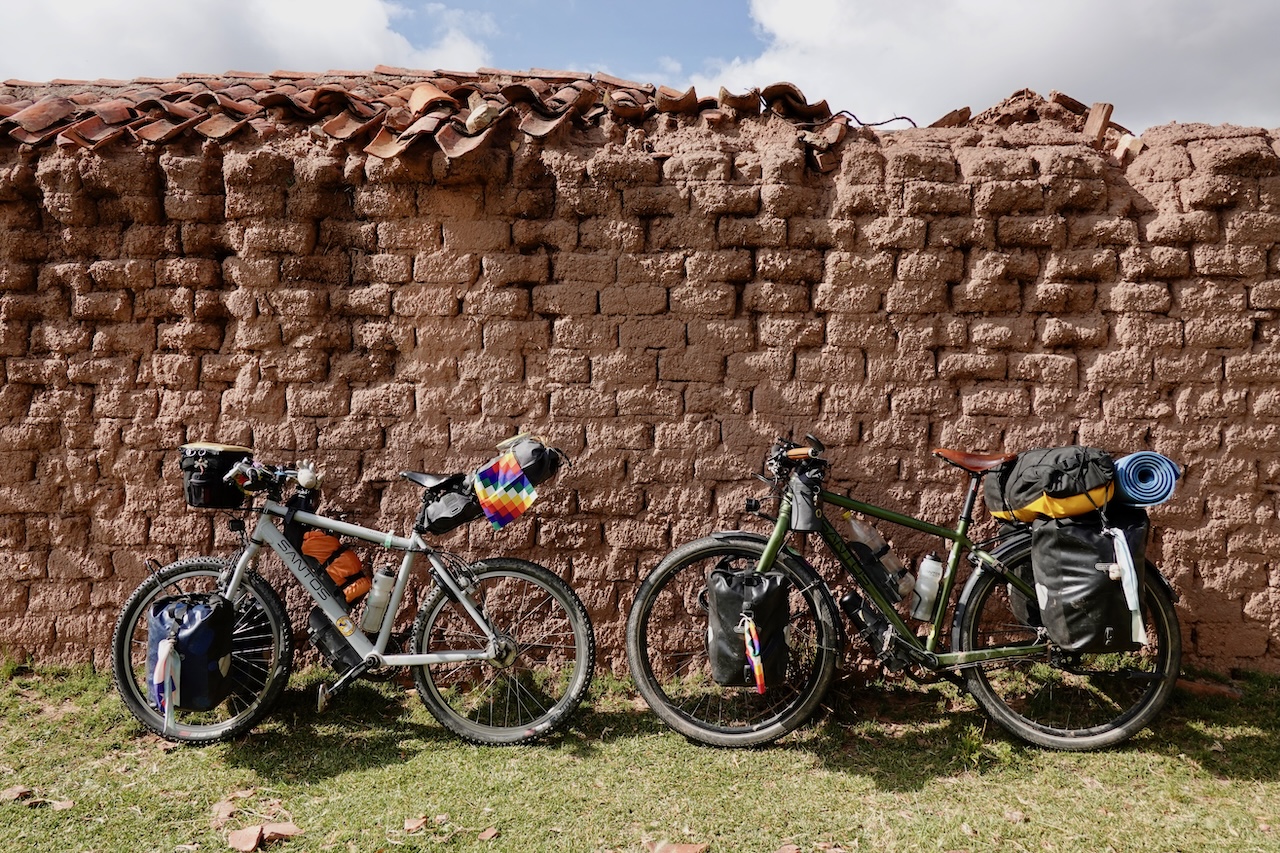
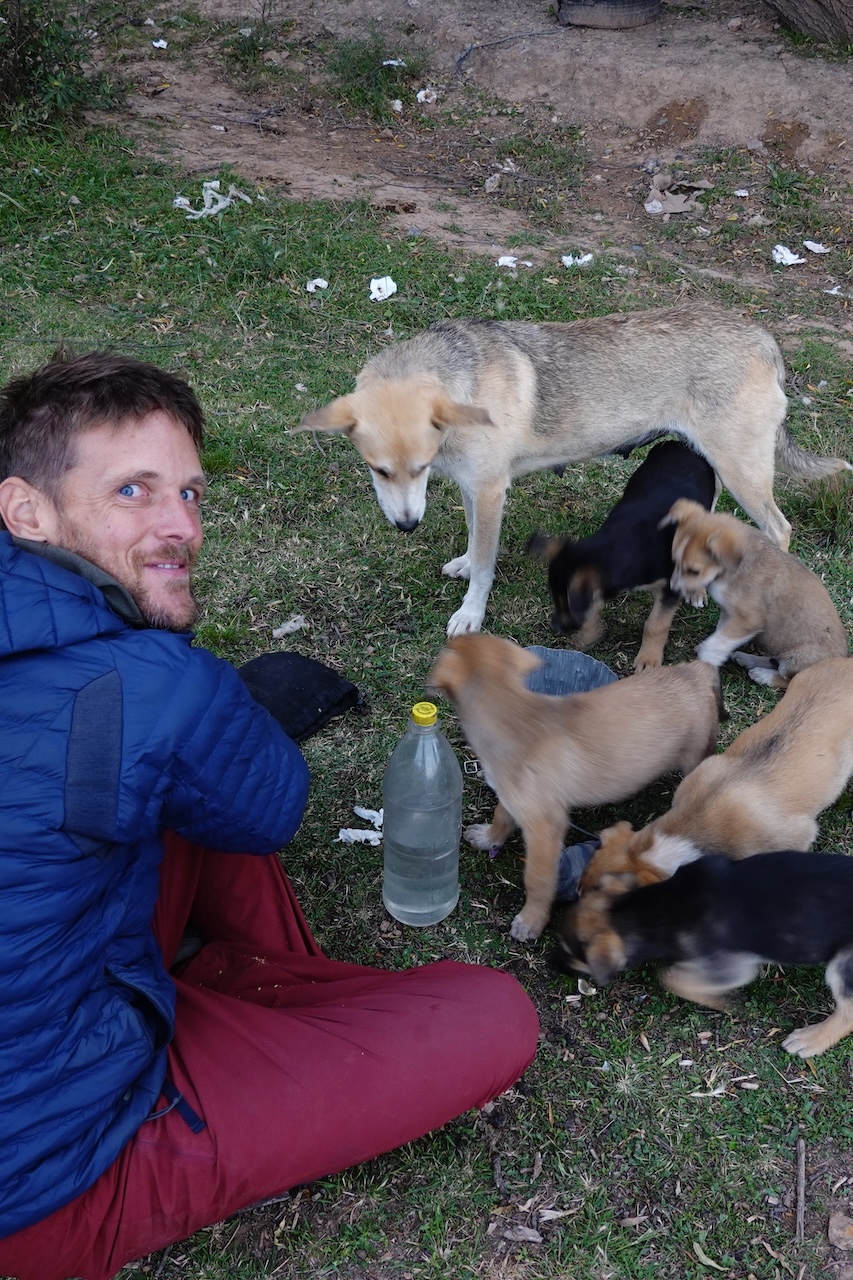

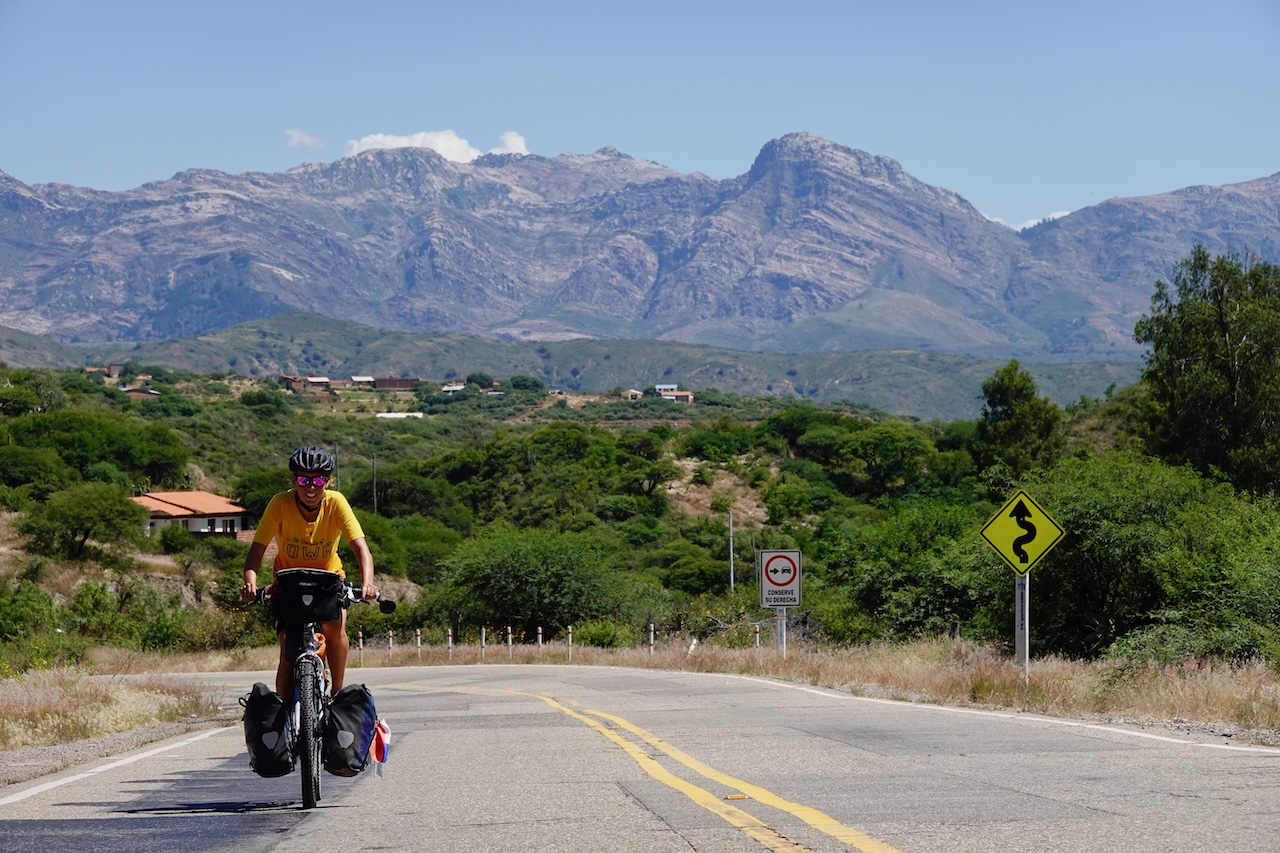
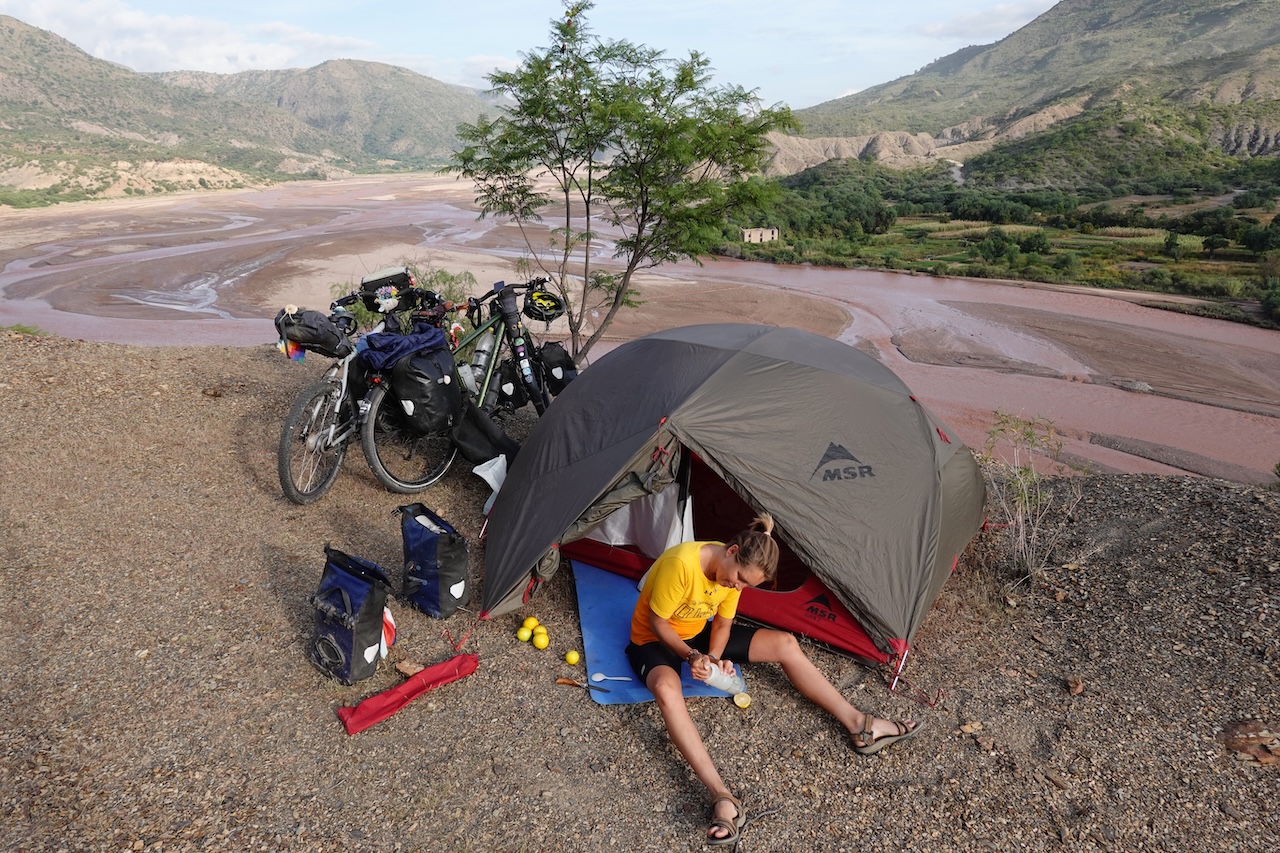


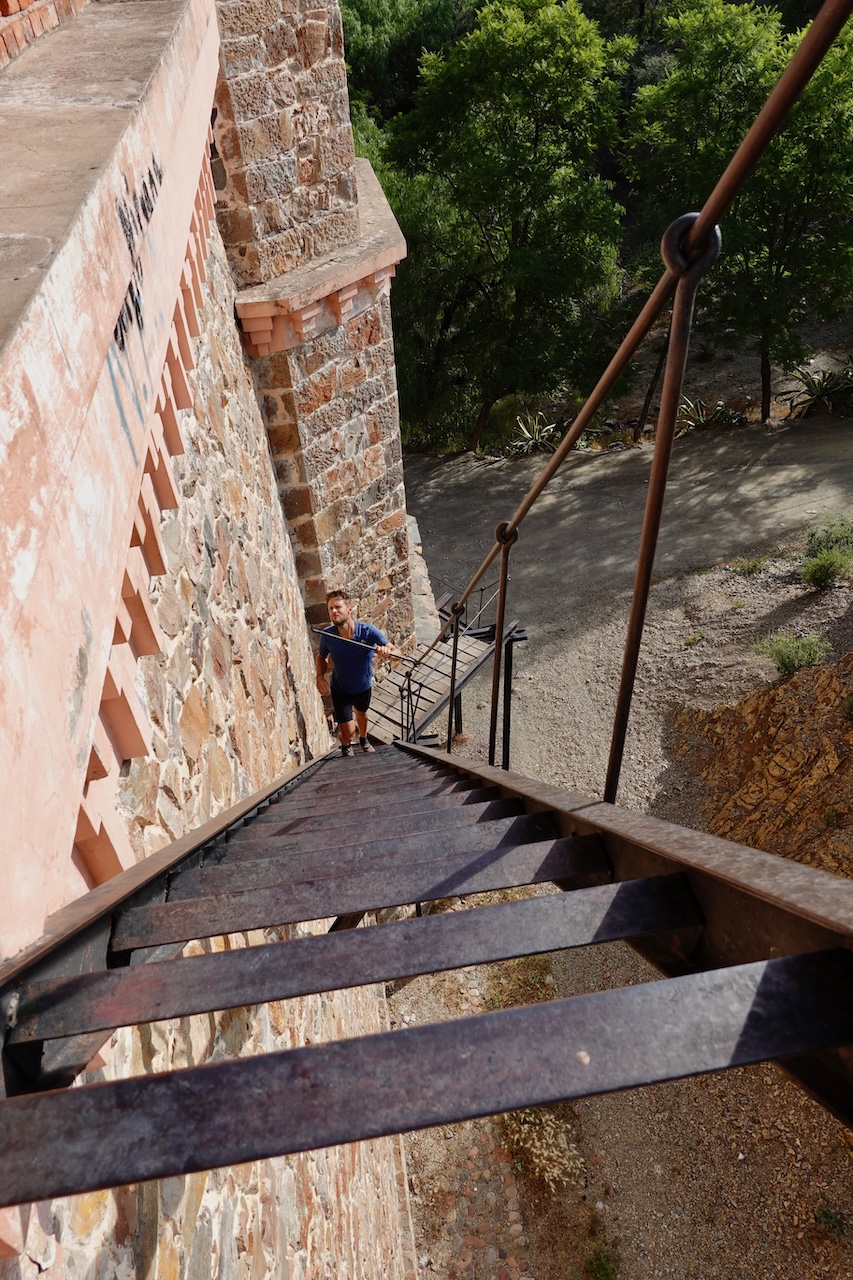
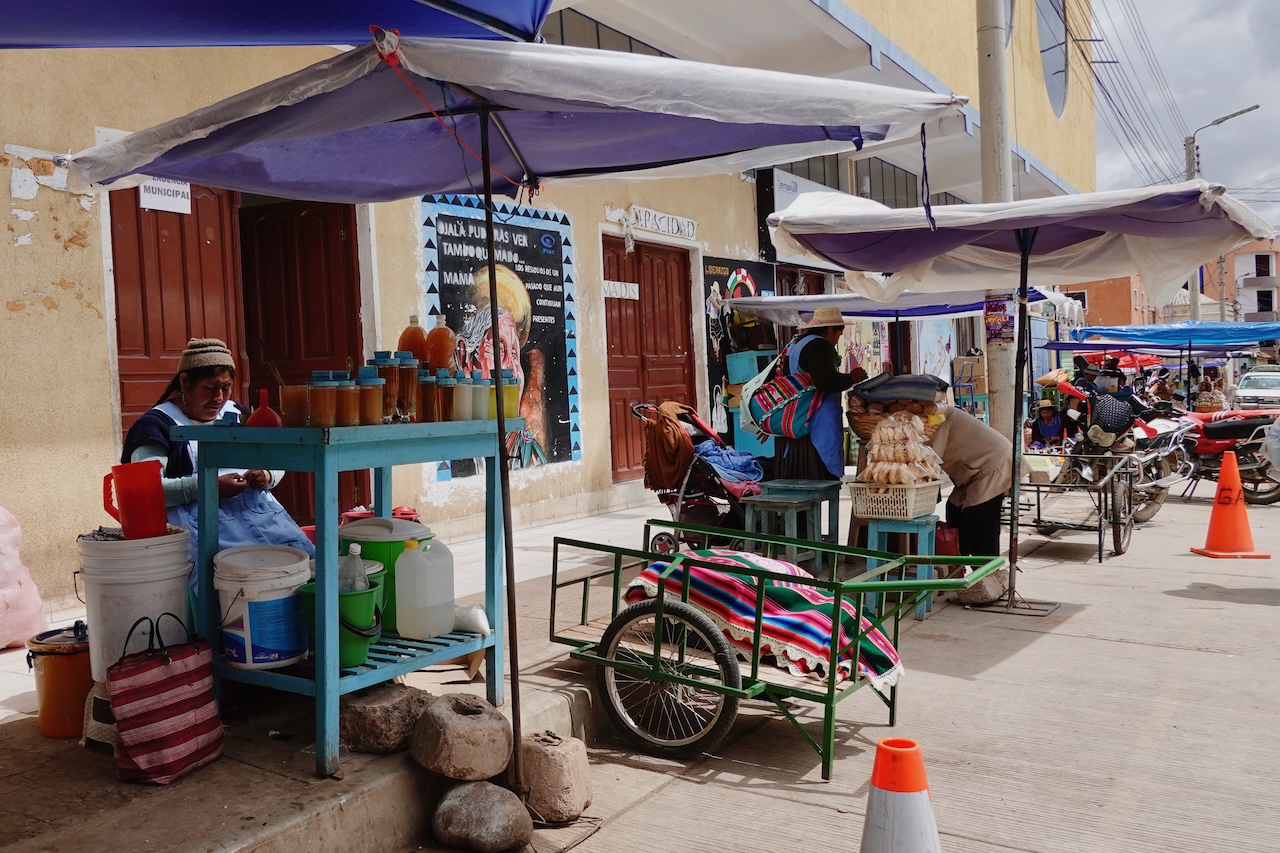
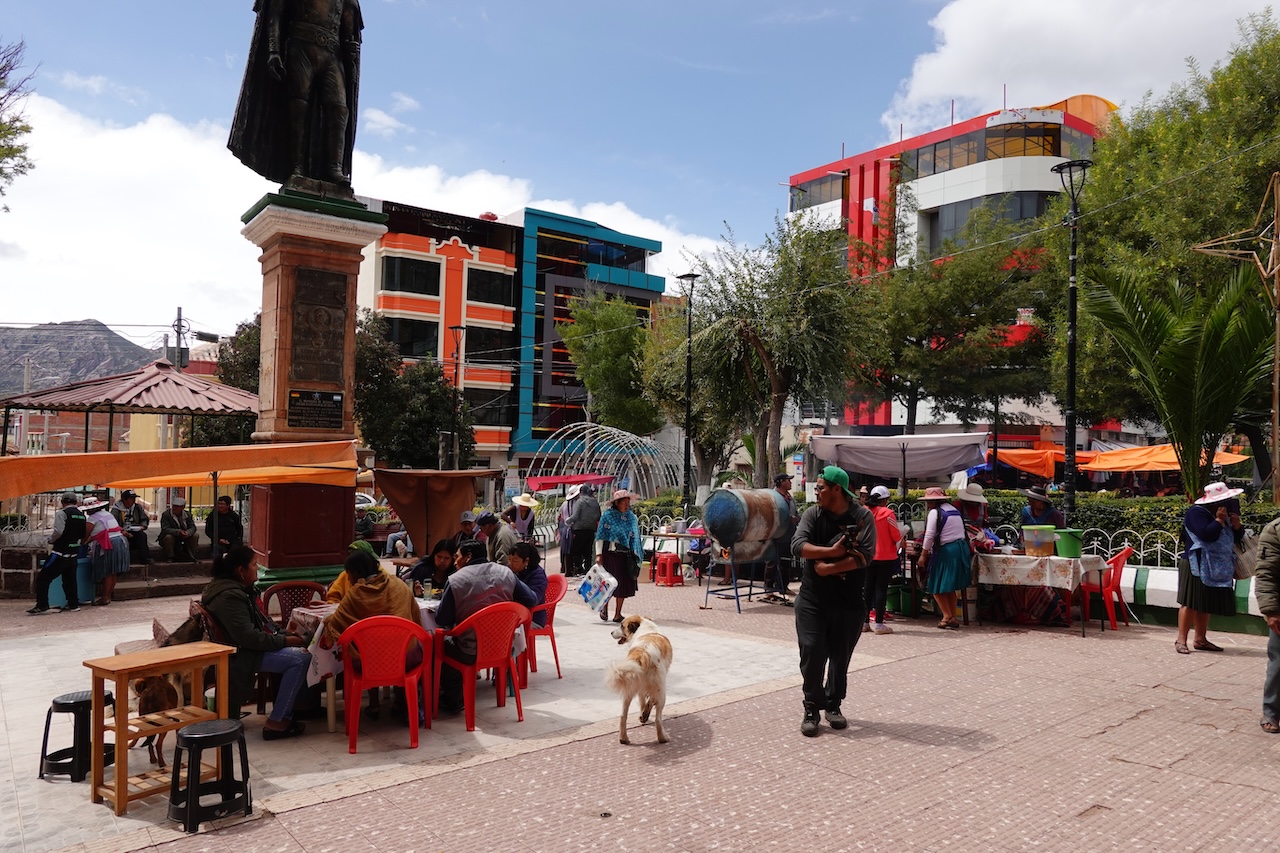

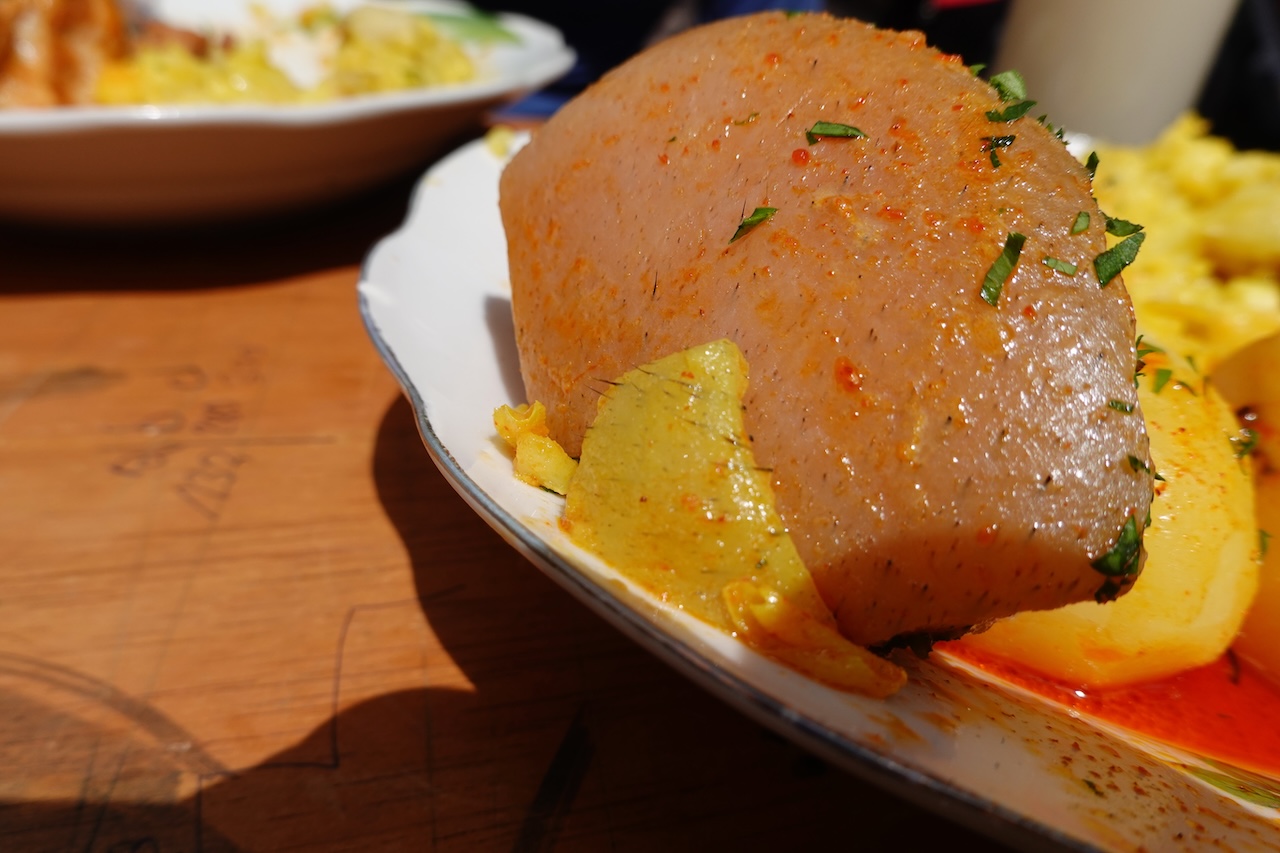
And now we are in Yotala, sanding, painting, carpenting and in the afternoons resting and sometimes playing a game. Both Saturdays we visited the city of Sucre where we admired the beautiful colonial city center and especially enjoyed the bustle and the many scents and colours on the large market. In a few days our time here will be over. We are both looking forward to getting back on our bikes. How that will go with the knee remains to be seen, but in any case we want and will be on the road again! To start towards Cochabamba. That just sounds fun, rhythmic and colourful. Whether that is the case and how we get there, you will read in the next blog!
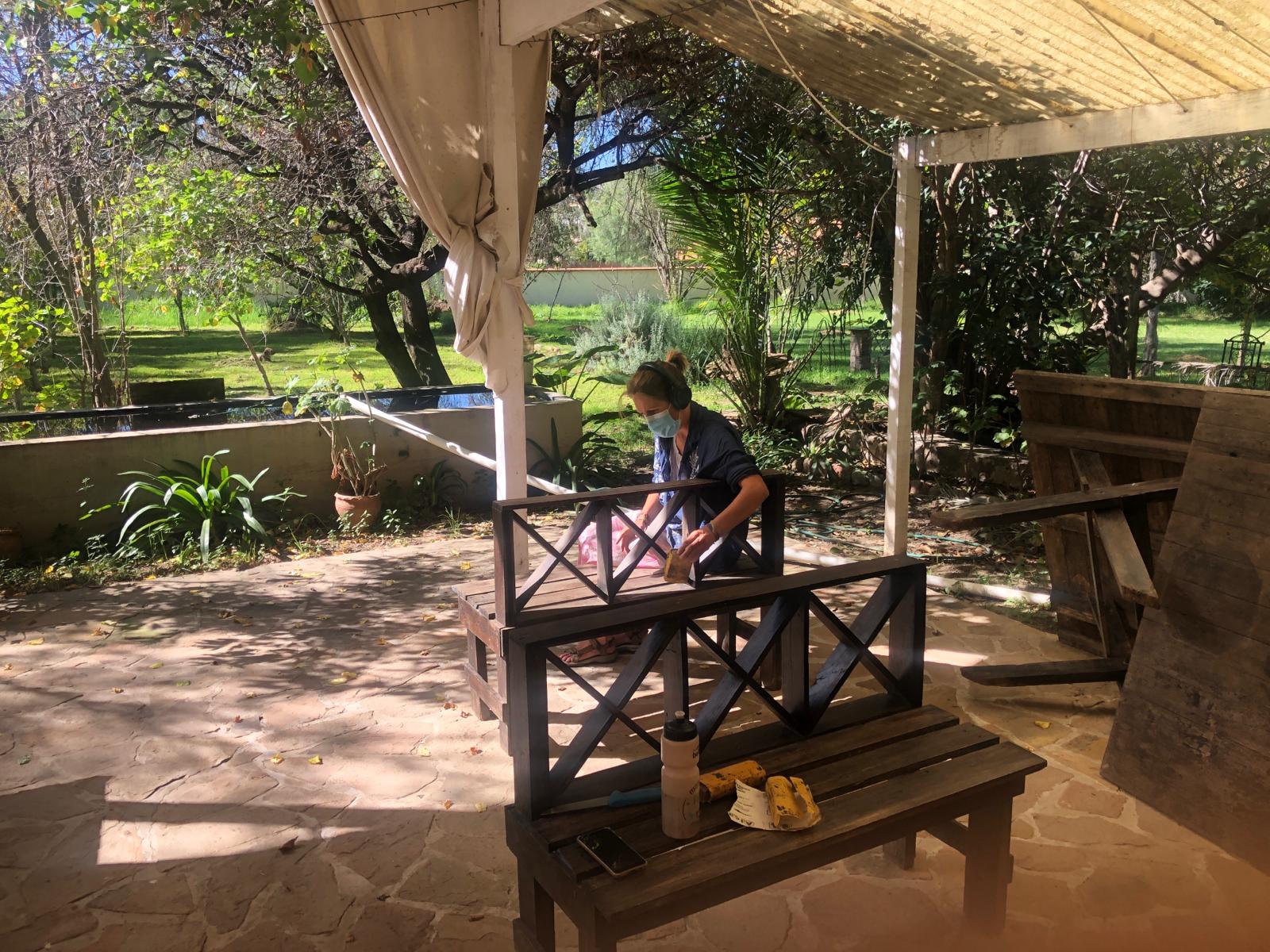

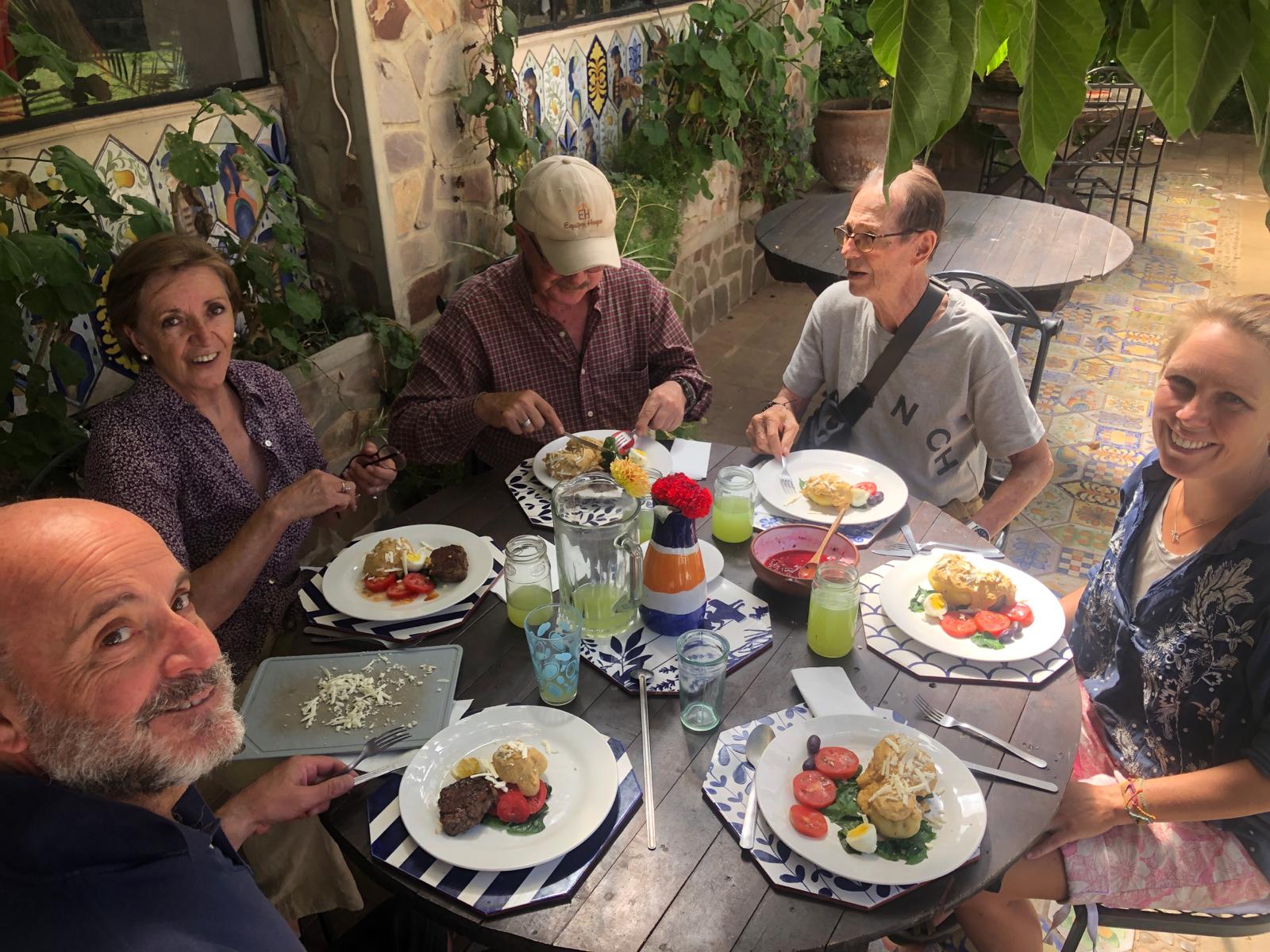

For now, warm greetings from the heart of Bolivia.
Hasta luego!
